





















Melbourn Village College celebrates its 60th anniversary this year (page 5). We are fortunate and proud to have such an excellent establishment in our village. The Community Transport Scheme is also celebrating their 25th Anniversary. Many congratulations to both!
The Parish Council have vacancies for a number of Councillors, and also announces details of the Time Bank, which sounds like a very great idea (page 13).
As usual there will be a lot going on this season, in melbourn and surrounding villages, including Open Gardens (page 5), Cambridge Open Studios, Home-Start Kite Festival Children’s Art Competition and Cambridge District Art Circle (page 67). Look out for announcements about the Water Light project (page 9), a film celebrating the Mel, an important chalk stream now beautifully maintained by a dedicated team of volunteers. There is also an piece on Melwood (page 19).
We have the continuation of ‘Travelling the Himalayas’ and in this edition we visit Tibet (page 48), and an interesting look at the RSPB Reserve in Fowlmere once known as the Fens of South Cambridgeshire, and some information on Thatching. Have a wonderful summer!
Front cover image: courtesy of Nicola and Ed Emery. See page 24 for ‘Thatching and thatchers in Melbourn’.
NO public money is used. We would like to thank TTP for their continued sponsorship of the magazine. Melbourn Magazine is printed quarterly and delivered free to every household and business in the village. All work on the Melbourn Magazine, including layout and design is produced by volunteers. The cost of printing comes entirely from advertising and sponsorship.
If you would like to advertise in the Melbourn Magazine see inside back cover for details


Village news
MVC 60th anniversary
Waterlight Film Project
Community Transport Scheme hits 25th Anniversary
Melwood Your Local Nature Reserve an ongoing project
Profile

Pritchard
Thatching and thatchers in Melbourn Education
information
collection dates
Making a difference The Impact of Piped Water on Villages Here & There
The Fens of South Cambridgeshire
The Idiot
Sum: Forty Tales from the Afterlives Travelogue
Travelling the Himalayas
- the revival of an ancient culture
Together
& Clubs
What’s On


MVC 60th anniversary
Melbourn Open Gardens
Melbourn & Meldreth Women’s Group

Primary School visits to the Library
Melbourn Womens Institute
March’ at Melbourn Hub

What’s On @ Melbourn Child and Family Zone
Forever Active
Film Project
Royston & South Cambridgeshire
Transport Scheme
25th Anniversary
Funding for Small and Medium Businesses
Adopt a Station Tub?
Parish Clerk
Parish Council Timebank
future Timebank events

your County and District Councillors
Monday 2.30 to 4.30 pm
Tuesday 2.30 to 4.30 pm
Wednesday 2.30 to 4.30 pm
Thursday 2.30 to 6.30 pm
Friday 2.30 to 4.30 pm
Saturday 10.00 to 12.00 am
Melbourn Village College celebrates its 60th anniversary this autumn – and they need your help.
Did you attend Melbourn Village College? If so, do you have anything you made while you were there. We would love to hear the story of your ‘treasures’ be it from a woodwork, needlework or DT class or adult education or evening classes. Please do send us a picture too for the display we are planning.
We also really want to hear from anybody who started at MVC on the day it opened. There were approximately 250 of you in September 1959 and although we are in touch with a few who attended the 50th anniversary celebrations, we’d love to hear from more of you.
Also, please let us know if you would be interested in attending a reunion/ birthday party on the afternoon of September 27th.
We have set up a dedicated email address for anything related to the last 60 years of MVC. Please do contact Vanessa Mann on mvc60years@gmail.com
11 am To 4pm
There are new gardens for 2019, as well as old favourites, and
ever-popular St George’s Allotments will again be welcoming visitors.
are £5 per person for anyone over 16, and will be available on the day from The Cross.
home-made cakes will be served and there
be plants for sale.

We are a small friendly group and we meet on the 4th Tuesday of the month except in December, we vary our venue between All Saints Community Hall in Melbourn and Holy Trinity Church Meeting Room
Meldreth. We either have a guest speaker or in house entertainment
by tea/coffee and biscuits. There is a fee of £1 on the evening and a chance to make a donation to our charity of the year which is Acorn House at Addenbrookes Hospital which supports families who have children in hospital.
On 25 June we will be taking a trip to sunnier climes as Avril and Roger Mellor share some details of their trip to Chile with us, this will be in The Meeting Room attached to Holy Trinity Church at Meldreth. On 23 July Joan Munden will be coming to talk to us about the SOE (Special Operations Executive) which she discovered lots about when researching her ancestry. This will also be in Meldreth as detailed above. In August we will be going out for a meal and the venue is yet to be confirmed.
All our meetings begin at 7.45p.m do come along if you’d like to, or if you want to know more please contact one of the committee members. Pat Smith (262575) Sue Toule (260955) Anne Harrison (261775) Angela Leach (262793) Pat Ames 261130 and Kimmi Crosby.

scheme is open to the mobility impaired in Melbourn and Meldreth
those who live alone or with their families, but need the extra support offered by our services. Couples
most welcome.
is also open to those in sheltered housing, as the scheme offers different,
services.
scheme also offers its services
periods to cover the temporary
relatives
support.

otherwise
have to make a small weekly
We have arranged visits to the Library in the Hub for Melbourn Primary School pupils. These have been a great success as the children have obviously enjoyed their outings. There was a high level of interest in books in the Library and how we control them. We were surprised by the questions asked and the obvious interest in reading books. It was clear that most of the children still prefer reading real books. We explained that we only have limited space so we only hold Adult and Junior Fiction books. If there is a need for other books we can obtain them quickly on reservation from the Cambridgeshire Library Service.
There is a comprehensive list of books available on line or help can be obtained from the Librarians. The Library is open every day, Monday to Friday in the afternoon and Saturday in the morning. We concluded the visits with a story which was thoroughly enjoyed by all. We hope these visits will lead to an increase in the use of the Library and hope the Summer Reading Challenge in July will be an even greater success than last year’s record.
Mike StapletonMelbourn Community Library
The Melbourn WI was re-started a couple of years ago and dubbed The After Eights for obvious reasons – we meet at 8 p.m. on the fourth Wednesday of the month in All Saints Community Hall.
We decided to meet at that time to enable younger people to get home from work or put their children to bed and come out for a couple of hours to meet people, maybe to learn something or just to be entertained. The old ‘Jam and Jerusalem’ vision of the WI is very old hat – we no longer sing Jerusalem and we are more likely to be tasting some of Tiptree’s preserves than making them ourselves!
At the moment, our ages range from 30 to 80 + but we all blend seamlessly and age does not seem to matter. We have tried to produce an interesting and varied programme for our members and after the speaker or activity we have coffee, tea and cake and an opportunity to socialise. Do come along and see what we are like, you will receive a warm welcome.
Mavis Howard
Sadly, most of us will be touched by dementia or mental health issues through our own direct experience or through family and friends and will recognise some of the difficulties faced by those living with the condition or caring for those affected.
Melbourn Child and Family Zone provides groups, activities and support for families. Our friendly and experienced Child and Family Centre staff offer a wide range of services and knowledge to help you and your family from pregnancy onwards.

We are located on Mortlock Street, adjacent to Melbourn Primary School.
All of our sessions are a chance to meet new friends and to also access support from Child and Family Centre staff.
A group specifically for crawlers and children up to 24 months (£2 charge per family)

• Wednesdays 10.00 to 11.30am @ Melbourn
Stay and Play
Enjoy time together with your child whilst accessing a range of toys, crafts and activities . (£2 charge per family)
• Thursdays 10.00 to 11.30am @ Melbourn
• Fridays 10.00 to 11.30am @ Bassingbourn Pre-School Baby Group
Welcoming environment to help parents relax and enjoy their baby. For families expecting or with a child up to a year old (£2 charge per family)
• Thursdays 1.00 to 2.30pm @ Melbourn
Melbourn Child and Family Zone
Mortlock Street, Melbourn, SG8 6DB Bassingbourn Pre School Brook Road, Bassingbourn, SG8 5NP
For further information:
Email: ChildAndFamilyCentre.South@cambridgeshire.gov.uk Phone: 01954 284 672

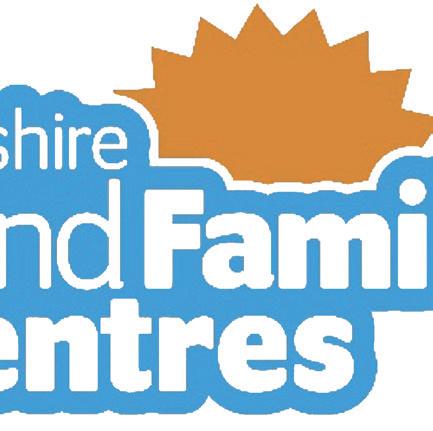
Facebook: search for South Cambridgeshire Child and Family Centres.

Enhance your health and well being by getting involved in YOUR community. Whether you’re looking to access practical support or activities in your area; have an idea for a community group; or would like to join our award winning volunteer programme, please get in touch!
For more information on accessing services or volunteering with Care Network take a look at our website https://care network.org.uk/ or call 01954 211 919.



Enjoy a variety of speakers and participate in a number of fun activities with Melbourn Women’s Institute

We’re a friendly group and would love to see you there!
Meetings are on the 4th Wednesday each month at All Saints Community Hall 8–10pm



For more information please email melbournwi@gmail.com or find us on Facebook by searching ‘Melbourn WI’


As a result, Melbourn Hub dedicated the month of March to raising awareness of the support and help available for conditions affecting the brain and the mind and named it ‘Mindful March’
On 7th March, the Hub hosted a ‘Dementia Friends’ evening which was a collaboration between the Hub and Melbourn villager Davina Biswell who has been personally affected by Alzheimer’s (a form of dementia) within her family. As a result of her experience, Davina along with her friend Steph Trayhurn, have become supporters of Dementia Friends – an Alzheimer’s Society initiative – and was keen to bring this initiative to Melbourn Hub.
Claire Unwins presented the interactive session to the many people who attended from the community, showing a short film and talking about the ways in which dementia affects people and their families and ended the evening with a chance to share experiences, offer advice and to signpost the support available.
On 13th March the Hub hosted a similar style session on Mental Health Awareness led by County Councillor Susan van de Ven, with speakers from North Herts Citizens Advice, Mind Services and Allyance Local Schools Counselling Service.
The well attended session gave people the chance to talk with the professionals both during the session and afterwards and begin identifying areas of support for their particular situations.
The month was rounded off with a sell-out fun quiz at Melbourn Hub which included a raffle to raise money for Alzheimer’s with great prizes donated by our generous community of Hub friends.
To find out more about becoming a Dementia Friend see www.dementiafriends.org.uk or for advice on mental health www.mind.org.uk
For information about further events and activities at Melbourn Hub www.melbournhub.co.uk or 01763 263303
option 1
Strength and balance MOTs can keep you doing the things you enjoy
A local woman has put a spring in her step after joining strength and balance classes that are keeping her doing the things she enjoys.
Rita, aged 77 from Ely joined the fun and sociable class at the local library class having heard about it from a friend after a recent fall. The class featured as part of the successful Stronger for Longer campaign.
For more information on the MOTs go to www. cambridgeshire.gov.uk/strongerforlonger.
Rita said: “The class has helped me with my walking, strength, balance, and posture, along with confidence outside of the class.”
You may have read about this project in previous editions of this magazine. Inspired by the River Mel poet Clare Crossman wrote nine poems about the river. She then linked up with film maker James Murray White to make a film about the river based on her poems. Further filming has been carried out by Nigel Kinnings who has also edited the film. More details about the project can be found at waterlightproject.org.uk.
After a year of capturing memories, interviewing residents, involving Meldreth primary school children and extensively filming, the film is now going to be shown in Melbourn.
You are invited to “AN EVENING WITH THE RIVER MEL” July 25th at 7.30 pm time at the Community Hall behind the church. This will consist of an illustrated talk about the river: its origin, wildlife, history and local memories of involvement with the river. After a break for refreshments the film will be shown, which will probably last for half an hour and we will then invite comments and listen and record for the website any further memories that the film triggers.

Following the local showing it will be shown in Royston and at venues in Cambridge and it is planned to also show it at film festivals around the country.
“Coming to the class will improve your well-being and help you to keep active. You will meet new people and it can be fun.”
Since the launch of the Stronger for Longer campaign back in October, over 100 new people have joined strength and balance classes around the county and are now stronger and steadier. Over 2,300 people have also downloaded our Supersix leaflet, which is helping people to do strength and balance exercises at home at least twice a week.
The nearest strength and balance classes in the district are run by Forever Active. For more information go to www.forever-active.org.uk/ .
“I can see the difference in myself, I do a lot of walking and since going to classes I am now able to walk that bit longer without any problems – which means I can go out more and enjoy with my friends.” continued on page 10
The Stronger for Longer campaign involves a range of partners, including Cambridgeshire County Council, Let’s Get Moving Cambridgeshire funded by Cambridgeshire County Council Health Committee, District Councils, local NHS, Living Sport and Forever Active.
Do you have a passion to help local families overcome times of special difficulty?
Home-Start Royston & South Cambridgeshire needs more Trustees, and this passion, coupled with common sense, is what links everyone who works to achieve the remarkable successes of this local charity.
Our professional approach enables us to respond to referrals from many other agencies in the local community including health care, education, local authority, and to requests from parents. The range of issues includes:
• An isolated single parent with two young children, fleeing domestic abuse
• A family with five children, mother unable to leave the house due to anxiety and panic attacks
• A child with Autistic Spectrum Condition, mum feeling very isolated and judged unable to leave the house
Our statistics show that the weekly support from our well-trained Volunteers helps restore confidence and control, leading to improved health and family relationships.
As an early intervention service, we help families ‘get back on track’, thus often preventing or reducing the need for statutory services or for a child to go into care. We estimate it costs £1500 a year to provide a Volunteer, whereas it costs around £3,000 a week, or £156,000 year, to fund a child in residential care.
Good governance is key to providing this essential service and we provide a comprehensive induction programme for new trustees. We particularly need people with Finance, IT, HR, Social Media and Fundraising expertise; however, whatever your background, if you are keen to help us continue to make a real difference to the lives of local families, we would love to hear from you.
For an informal chat, please contact Maureen Brierley, our Chair of Trustees, on 01763 262262. www.hsrsc.co.uk
We rely on volunteers and need help for any of the following:
Each morning cafe set up/move tables 8.30-9am
Daily clear down/move tables 3-5pm
Weekly monday room set up/move tables 10-10.15 am
Saturday afternoon kitchen help 2-4pm
Saturday meeting room set up/move tables 4-5pm
Daily/general help with following duties:
Willow is the only national charity working with seriously ill 16 to 40 year olds to fulfil uplifting and unforgettable Special Days.
Each day is a life-affirming experience that can lift spirits, reunify families and be a source of strength when it’s needed most. To date, Willow has provided more than 16,000 Special Days for young adults diagnosed with a life-threatening condition such as cancer, motor neurone disease, cystic fibrosis and Huntington’s disease.
For more information on fundraising for Willow, visit www.willowfoundation.org.uk/support-willow/fundraising.
Washing up, loading/unloading dishwasher, clearing tables, wiping tables, wrapping cutlery, taking food to tables, sweeping floors. Contact us: centremanager@melbournhub.co.uk or telephone 01763 263303



Royston & District Community Transport are proud to have reached their 25th Anniversary of supporting the local community, taking people where they need to go.
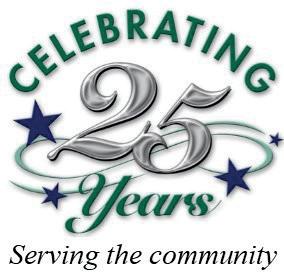

Over the years, RDCT has grown to meet the ever-increasing demand for their service. From modest beginnings back in 1994, with less than thirty volunteer drivers using their own cars and one wheelchair-accessible minibus, they now have eighty-five volunteer car drivers, plus three part-time paid drivers, covering a large area of North Hertfordshire and South Cambridgeshire. Their vehicle fleet now comprises three minibuses and two MPVs, all wheelchair-accessible.
The demand from passengers increases steadily year on year, with over 12,700 journeys made last year. Drivers carry out approximately fifty journeys every weekday, plus an increasing number on Saturdays, and in 2018 they covered over 223,000 miles.
All aboard! Passengers on the roomy 16-seat low-floor minibus.
Manager David Wherrell said: “Our volunteer car drivers are fantastic and we don’t just take people to hospital – we make journeys for health-related appointments, shopping and social visits or club outings. Our specialist vehicles enable wheelchair users to travel in their wheelchair, with drivers trained to MiDAS standards for passenger care.”
The scheme’s success demands sophisticated systems to handle bookings, driver allocations and invoicing and they are developing a computerised system to help cope with the workload.
RDCT is always looking to recruit new volunteer car and minibus drivers, who would receive 50p per mile towards their vehicle running costs.
If you can’t use public transport and don’t have a car, they can help. If you need transport, (please give at least three working days’ notice) or would like to be a volunteer, please call RDCT on (01763) 245228 –there is a 24-hour answering machine on this line – or see www.roytrans.co.uk

Relate deliver relationship talks to students in Cambridgeshire
Relate Cambridge has introduced talks in Cambridgeshire schools to teach students about the importance of relationships. Relate hope that by helping young people to understand what a healthy relationship is, this will enable them to sustain good relationships in later life, and will have a positive effect on their wellbeing.
Relate delivers an array of services including couples counselling, family counselling, children and young people’s counselling and sex therapy. Relationship talks in schools are Relate Cambridge’s latest offering and have already been delivered in a local secondary school where it was extremely well received.
With few examples of healthy relationships in the media and with the influence of social media, Relate Cambridge want to promote healthy relationships to students to show them what is normal and achievable.
Relate Counsellor Olga Fuentes has been delivering the talks, and has been asking the students to think about their own relationships and how they might be improved. The students learn about the things that make a healthy relationship, such as respect and communication. They are also taught about how to manage conflict and communicate well in relationships.
Olga says: “If children and young people are more aware of their relationships at school, they could deal with friendship issues or tackle bullying in a better way. Equally, if they transfer some of their knowledge about relationships into the home environment, they will understand their family relationships better.”
She continues: “Children and young people are not used to stopping and thinking about what is going on in their relationships. At a time when social media has a huge impact on how they relate to each other, it is crucial that young people become aware of the importance of communication and understanding in face-to-face daily interactions.”
Positive effects on well-being, happiness and life satisfaction can be attributed to good and supportive relationships. Relate Cambridge believe that it’s vital to teach people about relationships from a young age, and hope to bring the relationship talks to more schools in Cambridgeshire. They believe the sessions will have a positive impact on relationships within school, among family and friends, and will provide young people with a strong foundation to sustain good relationships in all stages of life.
For more information visit: www.relatecambridge.org.uk.
Small and medium businesses in Cambridgeshire can access Grant Funding and Free Energy Efficiency reviews, thanks to ERDF funding.
Physically fit and energetic people wanted to fill voluntary van assistant positions.
As a valued member you will be assisting the driver and other crew members delivering/collecting furniture to and from customer’s homes.
We offer travel and lunch expenses, a warm friendly atmosphere and a chance to help those struggling financially make their house into a home. “It is brilliant for people on a low income; it has helped me a great deal on improving mine and my children’s life.”
“Working as a volunteer I get to meet more people and it’s good seeing people get the help they need”.
“It is a great way to serve the community. It is nice to know that there is someone out there that can give you the help you need to set up a new home.”
If you are interested in helping half a day or a whole day each week, we are recruiting for crews MondaySaturday. For further information please phone 01223 414554 or email cara@cambridgereuse.org.uk.

The Business Energy Efficiency programme can potentially provide grant funding up to a maximum of £20,000, or 25% of project costs, to eligible businesses for energy efficiency improvement measures such as LED lighting, heating, insulation and solar PV.

The pot of grant funding is limited and businesses are urged to register their interest by 30th June 2019 at www. beecp.org/sign-up or call 01733 882549 or email info@ beecp.co.uk
Peterborough Environment City Trust. T 01733 882549
The Meldreth, Shepreth and Foxton Community Rail Partnership has been coordinating the care of the flower tubs at our stations for many years now.
Would you, your family, or your local business like to adopt a station platform tub? That simply means planting it to look lovely, once for summer and once for winter, and helping out a bit to keep it watered as part of our team effort.
And, if you or someone you know is looking for a Duke of Edinburgh volunteering slot, every year our station platform flower tubs benefit from a helping hand from Duke of Edinburgh and other volunteers.
Please feel free to contact us about either or both –or if you’d just like to help out occasionally with station gardening.
Susan van de Ven and Sarah Grove Meldreth, Shepreth and Foxton Community Rail Partnership Susanvandeven5@Gmail.com, Tel 07905325574
There are seven vacancies for Parish Councillors. If you are a community-spirited person who is passionate about the village you live in, wants to see tax-payers money spent responsibly, cares about future development and facilities, and wants to try and make a real difference to the community that your Council represents, then why not apply?
For further information, please contact the Parish Clerk. Parish Office opening hours.
The opening hours of the Parish Office have changed.
Mon & Tues: 09:00 – 13:00.
Weds, Thurs & Fri: 09:00 – 16:00.
Please note, the office is a busy venue and may occasionally be closed for meetings. Look for the sign on the door.
The Parish Council is seeking to recruit a volunteer Tree Officer from within the community. The Tree Officer will assist the Parish Council in determining and implementing an inspection regime, carrying out an annual inspection of trees for which the Council has a maintenance responsibility, and liaise with experts and council officers as needed.
If you feel you have the relevant skills and knowledge and would like to get involved in the community, please contact me on parishclerk@melbournpc.co.uk tel: (01763) 263303 (option 3).
Residents are invited to report Highways issues directly to Cambridgeshire County Council. Please note, the pavement is also part of the Highway. If you come across damage to either the road or pavement surface, please help by reporting it. https://highwaysreporting.cambridgeshire.gov.uk/
The Parish Council has a vacancy for an ad hoc cleaner at Melbourn Pavilion. If you are interested, please Contact the Assistant Clerk. assistantclerk@melbournpc.co.uk or tel 01763 263303.
Do you need money for a good cause or project to benefit the community?
By the time you read this, the April round of funding will have been and gone, but the Parish Council considers grant funding applications twice a year, in April and October.
The fund is not just for existing groups and organisations. If you wanted to start a brand new organisation then there is money available. Why not apply?
Applications must be made on the grant application form available at www.melbournparishcouncil.co.uk or from the parish office. The next call for applications will go out in October.
For more information on applying for a community grant, please contact
The Parish Office, Community Hub, 30 High Street, Melbourn, SG8 6DZ. Email parishclerk@melbournpc.co.uk or phone 01763 263303.
Simon Crocker Parish Clerk to the Parish CouncilMelbourn Parish Council has a new and exciting venture, the Melbourn Timebank. The principal goal is to bring the village community together by sharing time and skills. Here are some of the most frequently asked questions and some additional information.
Timebanking connects people within a community, sharing their knowledge, skills and interests. Everyone is welcome regardless of age or abilities, including local businesses and organisations. Time is the currency (1 hour = 1 credit into your Timebank account) and everyone’s time is equal so an hour of mowing a lawn is equal to an hour of learning how to knit! By connecting people who may not otherwise meet we can create mutual social and practical support networks, this in turn can help tackle loneliness and isolation with the result that members can experience an improvement in health and wellbeing by increasing their self-esteem and confidence. This can ultimately reduce the strain on public services and doctors. It is not a professional service and does not replace the need for engagement of qualified tradespeople or other professionals, it is best viewed as a friend or neighbour’s assistance with ad-hoc tasks.
To give you an idea of the success of Timebanking in the UK, there are 44,000 people involved, 5,900 organisations and 3.4 million hours have been exchanged since Timebanking began (around 20 years ago).
I don’t really need any help, what would I do with all the time credits?
That is entirely up to you, save them ‘just in case’ or donate them to the Community Pot, the Coordinator can then donate them to someone else in need.
I can’t really offer anything, but I need help; can I still join?
Absolutely, yes! It is very unlikely that you don’t have anything at all to offer! Sometimes it can be the small things that can help others the most, just sitting and talking to someone who would otherwise be alone, or helping them tidy a cupboard, that seems daunting to just one person on their own, can make a big difference.

Timebanking fits around your lifestyle – you can do what you can, when you can. Have a look at http://tol2.timebanking.org/ melbourn/ and http://timebank.melbournparishcouncil.co.uk/ for some more information or contact Cath by one of the following methods:
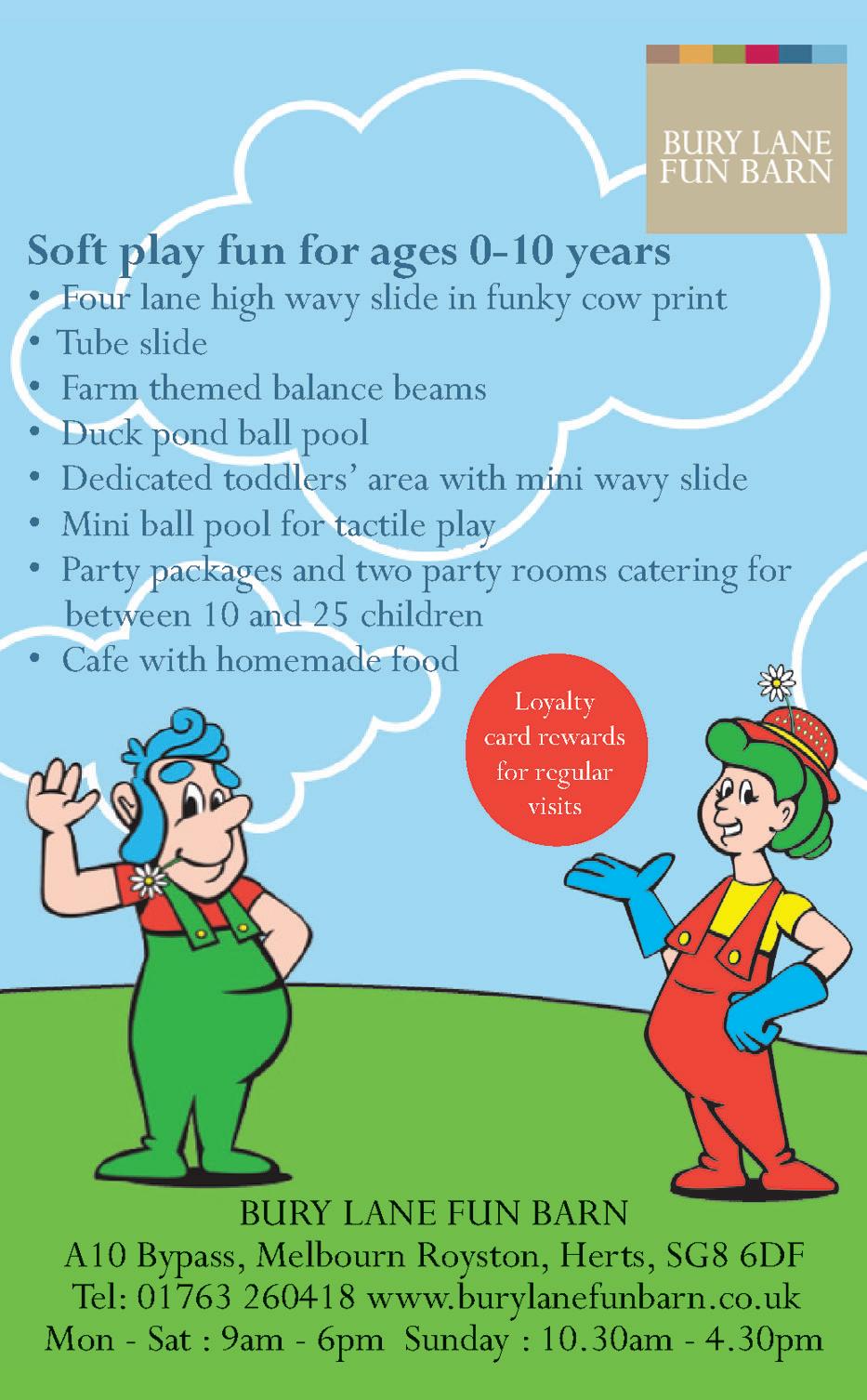
Catherine Sharman, Timebank Coordinator, Melbourn Parish Council, Melbourn Community Hub, 30 High Street, Melbourn, Cambridgeshire, SG8 6DZ Tel: 01763 263303 option 3 or email timebank@melbournparishcouncil.co.uk. You can also find us on Facebook by searching for Melbourn Timebank.
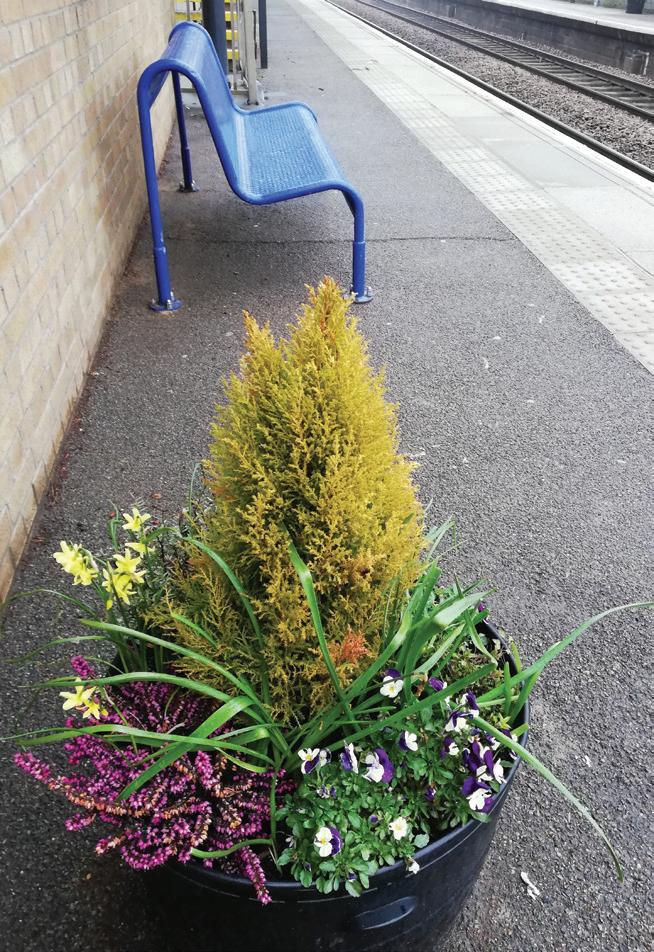
If you are able to attend our Timebank coffee mornings, they are held on a Thursday from 10 am –12 (1st, 3rd and 4th weeks each month) in the Community Hub in Melbourn for people to come along and find out more about Timebanking. On the 2nd Thursday of each month, the coffee morning is held in the Media Room, Moorlands Court at Moorlands Close, Melbourn SG8 6HF.
Additionally, an evening drop-in is being arranged, time and venue to be advertised locally and online once confirmed.

I’m Cath, we moved to Melbourn last year, and I have recently been appointed by Melbourn Parish Council as Timebank Coordinator. I am passionate about keeping the sense of community alive in villages and enabling people to connect with one another. I am part of your community, living here in the village, and coordinating a successful Timebank is in all our interests, so I am always keen to hear your thoughts and ideas.
There will be an official launch in the near future, this will be advertised locally and online once confirmed. We are also working on some new groups for members, such as an arts and crafts group and a board game group.
One of our Timebank members, who contributes to a number of village events throughout the year, has set up a new village website called What’s On In Melbourn to help us all find out about all the great events that are happening in our village throughout the year and to make sure that we don’t miss out. https://whatsonmelbourn. wordpress.com builds on the great work of Melbourn Magazine that provides a platform for local voluntary groups and organisations to reach out to the community with news of events and encourage new members to join them.
At the heart of the new website is a calendar of events that will also help organisations choose the best date for their
events and avoid clashes with other events that may need support or equipment from Melbourn Fete Committee. It also provides a one-stop-shop for residents who want to get more involved in village life and are looking for options, opportunities and how to access more information. To this end, all voluntary groups and clubs are provided with their own web page and the opportunity to link to other information and contact points. If you would like your group to be part of this village website, then please make contact through https://whatsonmelbourn.wordpress.com or telephone David Atkins on 01763 263462
We write to you from the District and County Councils, – but first things we’re involved with in Melbourn.
Getting to Melbourn Primary School: It’s not surprising that so many parents are trying as much as possible to take their children to school without a car – it’s free, and the twice daily walk/scooter/cycle ride does plenty to help get much needed regular exercise. But a plea has come through from parents and children alike about road safety:
• Extra driver care would be appreciated, especially at junctions near the school like Orchard Road and Mortlock Street/New Road.
• Zig-zag lines in front of school gates mean ‘no parking’ –please don’t park on zig-zags!
• School gates open at 8.45 am – but there’s a breakfast club for families that might wish to drop their children off earlier.
Meanwhile, a long list of ideas for better road safety to run past County Highways – tallying with comments and concerns from around the village, not just school-run related.
Hub Mental Health support: At the well-attended Mental Health Support awareness evening back in March, most people in the audience were not aware of the NHS helpline for people in mental health crisis: ‘Dial 111, choose Option 2’ (just Google these words to learn more). This has proven very successful in mitigating against mental health crisis admissions to A&E.
Mind is a great local resource : look them up at www.cpslmind.org.uk/ or phone 01223 311320.
East West Rail: This came on suddenly between Magazine issues! The East West Rail Company is a private company that will recommend to Transport Secretary Chris Grayling a rail link route to connect Bedford and Cambridge as part of a wider East-West rail project. The devil is in the detail and it’s important to note that Melbourn sits in the path of a possible preferred option. The financing of the route will largely depend on very large-scale development in its midst; we’re concerned because development on such a scale should be a careful process led by the Local Planning Authority, not a private company.
Solar Studs on Cambridge Road path: Some lovely messages have come in about the solar stud lights that seem
Do you love our station flowers?
Perhaps you would consider: Sponsoring a tub
(planting it with summer/winter plants)

Helping with planting or watering and other green-fingered station projects
And if you’re looking for a Duke of Edinburgh/ Scouts/Guides volunteering opportunity, we can help!
Please contact:
Susan van de Ven and Sarah Grove
Meldreth, Shepreth and Foxton Community Rail Partnership susanvandeven5@gmail.com, 07905325574

sarahgrove.msfcrp@gmail.com, 07810395759
to have been dropped like jewels onto this path, popular with walkers, cyclists and scooters alike.
Annual A10 Awareness Ride June 9: The annual A10 Awareness Ride which sets off from Trumpington Park and Ride at 10 am, arriving at Philimore Garden Centre’s big lawn for refreshments as usual. You don’t need to go on the whole ride – just come to Philimore’s.
Melbourn-Royston path and bridge getting closer: Step by step this project IS advancing, under the heading ‘Melbourn Greenways’, part of the Greater Cambridge Partnership’s idea of ‘green’ corridors spreading out from Cambridge along key routes. The A10 is one of those corridors, and getting all the way to Royston is the goal. You can help in a big way by coming along to one of the local consultation events – or check www.a10corridorcycle.com for the on-line version, available from June 9.
• A10 Awareness Ride, June 9, 11 am–12 at Philimore’s
• Melbourn Hub, July 11, 6:30–8:30 pm
New Shelter at Meldreth Station: At last – and we wish David Piggott were here to see it. Yes, the new station shelter exists and is being used. We’ll be celebrating with a station garden tidy-up and picnic in the near future. Please check out meldrethsheprethfoxtonrail.org.uk for more information, or posters at the station giving details.
Child and Family Zone baby weighing clinics – staff shortages: There is a national shortage of health visitors,


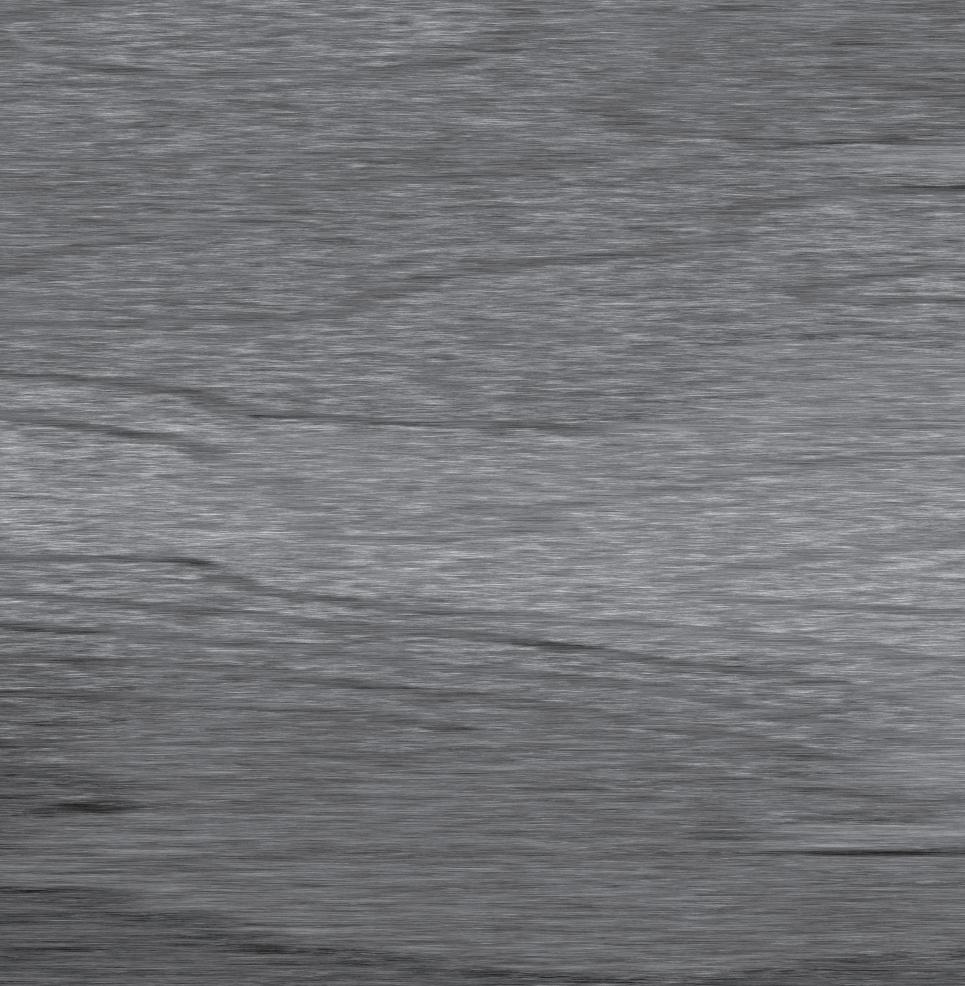


and a shortage here in South Cambs. On more than one occasion, the Baby Weighing Clinic at Orchard Rd has been cancelled for this reason.
Staff shortages generally: From many key public service sectors – like health, social care and teaching – we hear of South Cambs staff shortages, attributed to lack of housing that people can afford, and lack of affordable and workable public transport networks.
The new Local Plan is underway: What is it and why does it matter?
We’ve heard so much in recent years about unplanned speculative development, during a protracted period when the ‘Local Plan’ had been suspended due to a shortage in what’s called the Five-year Housing Land Supply.
The Local Plan is the legal, statutory process whereby growth is carefully planned. Government tells local councils how many houses they must build over a long period of time, and this is divided into smaller chunks of time with more detailed plans to ensure that the process is properly thought-out, as well as accompanying infrastructure plan to support new populations. Thankfully, we’re now back into the proper Local Plan process, which by definition must be accountable and transparent – so, we can see all the proposals, and give our responses to them; these are in turn carefully read and responded to, and do contribute to the final outcome. (In the last Local Plan, Melbourn had the highest consultation rate of any village in South Cambs, and the shape of the plan was clearly influenced.)
The first stage of the Local Plan process is the ‘Call for Sites’ whereby anyone can submit a proposal for a piece of land for development. Then there’s a long sifting through all these proposals to see what’s bonkers and what’s not. And then, a long consultation process. An accompanying Transport Strategy is developed by the Transport Authority (which used to be the County Council but is now the Mayor and Combined Authority). Then the draft Local Plan is put to the vote at South Cambs District Council, and finally it is approved by the Secretary of State. Once adopted, development can begin on those parcels of land that have included in the new Local Plan.
The Call for Sites stage has been completed. There is a Local Plan webpage– please note that you can login to consultation databases by area of interest. Rather than give you the long web address, please just Google ‘South Cambs District Council Call for Sites’ and you’ll land in the right place.
South Cambs District Council’s housing and environmental policy is to meet housing need for that workforce sector that currently cannot afford to live here, and to achieving Zero Carbon by 2050: so shaping the Local Plan will need to ally with these goals.

Advice or a chat? We can meet you any time at the Melbourn Hub to discuss any concerns or advice needed – please contact us to make an appointment.
Jose Hales and Philippa Hart, District Councillors. Susan van de Ven, County Councillor.
Serves: 4
in: Over 60 Minutes
Syns per serving: FREE Suitable for vegetarians
A layered pasta, tomato sauce and roasted vegetables with a white sauce topping.
2 large courgettes, roughly chopped 2 large yellow peppers, deseeded and roughly chopped 1 large red pepper, deseeded and roughly chopped 2 large onions, roughly chopped low calorie cooking spray salt and freshly ground black pepper 400g sliced mushrooms
1 tbsp tomato purée 400g can chopped tomatoes
1 vegetable stock cube, crumbled 2 tbsp light soy sauce
10g fresh basil, finely chopped
2 tsp paprika
1 tsp garlic salt
1 tbsp balsamic vinegar
75g baby leaf spinach
12-14 dried lasagne sheets, briefly dipped in cold water
1 tomato, finely chopped (optional)
For the sauce
200g peeled butternut squash, roughly chopped 200g peeled floury potatoes, roughly chopped
1 vegetable stock cube, crumbled 120g plain quark
1 large egg yolk
½ tsp mustard powder
Preheat the oven to 220°C/Fan 200°C/gas 7.
Put the courgettes, peppers and onions in a large roasting tin, spray with low calorie cooking spray, season to taste and toss well. Roast for 10 minutes, then stir through the mushrooms and cook for a further 15 minutes.
Add the tomato purée, chopped tomatoes, stock cube, soy sauce, basil, paprika, garlic salt and balsamic vinegar plus 300ml water and cook for a further 10 minutes. Remove from the oven and stir through the spinach. Reduce the heat to 200°C/Fan 180°C/gas 6.
Meanwhile, make the sauce. Put the squash, potatoes, vegetable stock cube and 450ml water in a medium saucepan over a high heat. Bring to the boil, cover and simmer for 15 minutes or until tender. Remove from the heat and, without draining, add the remaining sauce ingredients. Whizz until smooth using a stick blender and season to taste.
Spray a 30cm x 20cm ovenproof dish with a little low calorie cooking spray. Spoon one-third of the roasted vegetables into the bottom of the dish and cover with lasagne sheets. Repeat these layers twice more, finishing with a layer of lasagne sheets that covers the roasted vegetables completely. Pour over the sauce, pushing the sheets into the sauce a little and topping with the tomato if using. Bake for 35–40 minutes or until the lasagne is cooked through. Serve hot with salad and enjoy!

A few points that make us stand out, Rothwell’s has been in business since 1993 We’re an honest local family firm Our large truck mounted machines mean more cleaning & drying power
the best results possible.
Members of both the NCCA and TACCA.
move the furniture.
it’s



Conservation of habitats is often a slow process but some tasks recur each year. Cutting the meadow, control of scrub and management of invasive species such as nettle and ivy continue, along with routine tasks such as cleaning and repairing nest boxes and strimming taller growth in the wood. However, we are also trying to improve the diversity with introduction of native species as seed, small plants and young trees.
2019 started much as every year, with an excellent show of snowdrops. A few plants responded to the relatively mild winter with peak blooming in February. The daffodils also put in a strong showing and are now well distributed around the wood. During 2018 we planted some natural varieties and these are showing healthy growth, although they won’t flower for a couple of years. The oxlips and primroses showed well in April but sadly produce little seed, as the flowers get eaten by rabbits. However, there is a remarkable mixture of hybrids between oxlip and cowslip and oxlip with primrose. The latter produce bigger and showier blooms, for which we can thank some very busy bees.
The birds were in spring mood early and the air was full of their tuneful calls in Mid-April. A bird walk was held with Mike Foley in May and a wide variety of species were again spotted.
 Dusky Cranesbill
Dusky Cranesbill

ground ivy. A brush cutter is used to break up the ivy and we hope to see an increase in woodland flowers in this area.
The objective of the conservation work is to increase the biodiversity in the wood, whilst remaining true to the natural habitats of the local area. Underpinning everything are the trees and flowers, supporting a range of insects, which in turn support



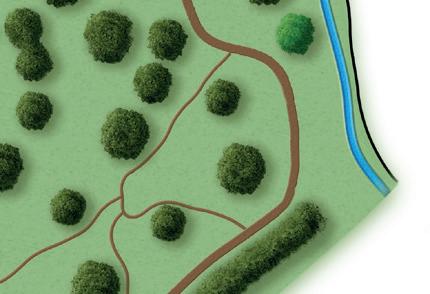
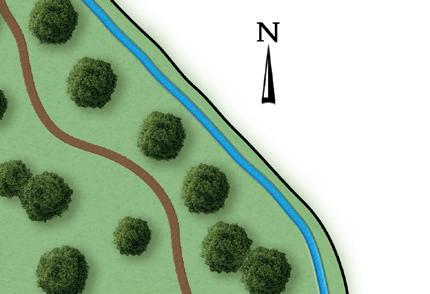



turn support
















are making good progress and provide attractive









repair as animals don’t respect boundaries and
Sallow and Barberry bushes at the side of the meadow are making good progress and provide attractive displays of Pussy Willow catkins and hanging clusters of yellow flowers respectively. Controlling the nettles around these bushes remains one of the summer’s more uncomfortable jobs. The hedge planted along the eastern side of the wood continues to make slow progress. The adjacent dead hedge needs constant repair as animals don’t respect boundaries and make their own ways through the wood and neighbouring areas.
The older hawthorns continue to be coppiced in order to encourage new young growth. This improves light to the floor of the wood and encourages a wider variety of ground hugging plants. This is facilitated by regularly removing
The older hawthorns continue to be coppiced in order



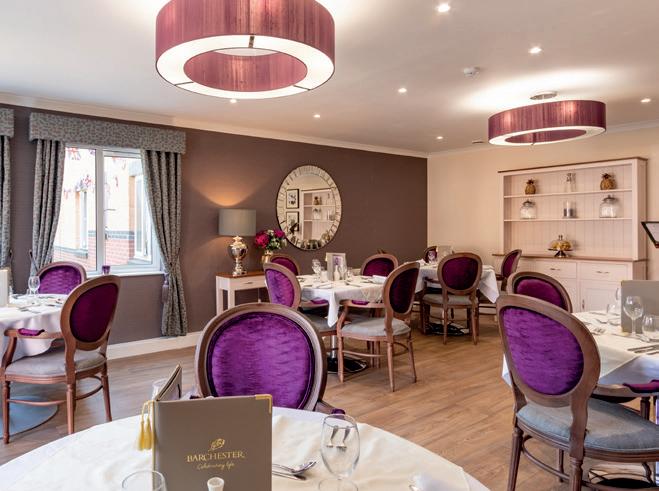




MONDAY
TUESDAY
Meridian


FRIDAY
Melbourn


Form Centre

Royston
Cambridge Carpet & Upholstery Cleaning
Carpet and upholstery cleaner based in Cambridge. Working in and around Cambridge, Royston, Saffron Walden, Newmarket and Huntingdon.
Carpet cleaning using Dry Fusion™ system
Hot water extraction cleaning
Dry Cleaning for natural floor coverings
Stain treatment
cleaning using Crystal Fusion™
Curtains cleaned
Infestation treatment
Odour neutralisation using ozone generator
Competitively priced
Fully insured with public and product liability
products used
Mobile: 07830 227138
01223 836002
christhomascleaning@gmail.com
We are a war m, friendly, f amily r un home conveniently situated close to the station and town centre of Royston.
If you would like to f ind out more about St George’s, please call us for a brochure or drop in for a chat.
Kneesworth Street, Royston, Herts. SG8 5AQ
01763 242243
site: www.stgeorgescare.com
birds and bats in the wood and surrounding area. Observing the success or otherwise of work undertaken is therefore an important casual activity whilst walking around the wood. A number of flowers introduced have established and the trees and bushes survive, although not all are growing as fast as was hoped. Dusky cranesbill and nettle-leaved bellflower seem to be slowly spreading. In what is basically a dry wood, the importance of areas of leaf mould has been emphasised by the appearance in 2018 of a couple of flowering wood anemones and a fern, tentatively identified as male fern. The former must originate from roots planted in the same area 3 or 4 years ago and thought to have perished. The latter seems to have established naturally, possibly from spores carried on passing boots. Two specimens of wild garlic (Ramsons) are of unknown origin and may have been overlooked until uncovered by brush cutting. The slow introduction of native bluebells grown from seed continues but the rabbits keep heavy pressure on them.

Flower meadows remain the most threatened habitat in South Cambridgeshire so we continue our efforts to ensure this part of the habitat is maintained to encourage a wide variety of species. 2019 will progress our aims in the wood and longer term we hope to improve the flora of the meadow.
For more information on the group, visit the website at www.melwood .btck.co.uk or contact Bruce Huett at brucehuett@ compuserve.com or 01763 232 855 Bruce Huett based on material from Jim Reid.
I have known Catherine ever since she was a little girl, a contemporary of my daughters at Primary School. Although born in ‘the other place’ (Oxford) the family moved here in 1969 and her mother Brenda was very well known as the village librarian. Her father Ray worked for Vince and Sons of Ely, specialising in mechanical and engineering repairs. Catherine went on to Melbourn Village College and eventually to work at Heffers Bookshop in Cambridge where she remained for 2 or 3 years.
She went to Worcester where she once again worked in bookshops – the love of books obviously being a family trait – then moved on to Malvern where she decided to go to Agricultural College in Herefordshire. Having been involved for a number of years in the National Trust Acorn projects working outdoors with special needs or drug rehabilitation people, an opportunity arose for her to take up a place at college. From there it was a natural progression to take employment with the National Trust and she found herself living on Exmoor, hedging and ditching, leading guided walks across the moor and dealing with a pair of heavy horses which were used in extracting timber from the forests. Exmoor is a Site of Special Scientific Interest and on that terrain, a tractor would have been impossible to use besides being environmentally damaging, so the horses are used.
Catherine was living in a NT cottage and regularly saw job opportunities coming up around Britain and one post caught her eye – that of House Steward/Curator at Hill Top, Beatrix Potter’s farm near Windermere. Many people applied for that job but Catherine was chosen and she remained there for 27 years. It was deeply interesting and a tremendous privilege to work with the lovely old furniture and the collections of paintings and ceramics. The little books are so beloved, holding a special place in everyone’s affections and the steady stream of visitors proved to be a constant delight. As well as ordinary visitors like you and me, there were many famous people who made the pilgrimage to Hill Top, various member of the Royal Family, Harry Secombe, Esther Rantzen, Barbara Streisand, Roy Strong and Noel Edmonds to name but a few. Catherine also co-operated in a number of publications – she helped to rewrite NT guide books, worked with Susan Denyer on ‘Hill Top, at home with Beatrix Potter’, with Linda Lear on ‘A Life in Nature’, did various articles for the NT magazine and particularly, recently, helped Lucinda Riley with research for the third book in the Seven Sisters series where she is named in the credits. There were many other publications on which she worked and, furthermore, her cats appeared in print when Amy Feldman wrote ‘Cats of the National Trust’!
come from all over the globe to recreate the safe world of their childhood – but unsurprisingly the largest group of visitors come from Japan. So many Japanese want to see the home of Peter Rabbit and Mrs. Tiggywinkle that the signposts
even written in Japanese! Catherine learned a little Japanese
order to help visitors round the house. Every gender and

over the delicate watercolours and Catherine

says that a lot of people were moved to tears remembering their childhood and she was privy to a number of very moving private and personal reminiscences. If it was not a very busy day, she would make a cup of tea and lend a sympathetic ear to the visitor. On one occasion the house was visited by a family of FOUR generations, the visit was to mark the 100th birthday of the great, great grandmother.
Hill Top closed for the winter months and the end of the season was marked by the ‘putting to bed’ of the house. Everything would be cleaned, wrapped and put away –furniture covered and paintings taken down, a ‘good old side up’ in the vernacular! Catherine’s favourite job was to clean and pack away the doll’s house which featured in Two Bad Mice’.
On the subject of curating the contents of the house, Catherine mentioned the number of experts employed by the NT and how much she learned from them. The period during which these properties are closed is a vital time for assessing the condition of the inventoried items in the collection. Catherine had the opportunity of watching these experts at close quarters and went on a number of courses, one in particular sticks in her mind – a conference on DUST. Who would think that dust could be fascinating? Yet in a small house with a large daily footfall dust was a very real threat to some of the artefacts.
Beatrix Potter died just before Christmas 1943, which meant that there were still a number of local people who knew her who were still alive and could give Catherine first hand stories about the charismatic children’s author. I asked her if she had ever felt moved to write a book herself, but she felt sufficient people more qualified than she had already
covered the subject. When Beatrix died, she left her estate to the National Trust – her father Rupert Potter had been the first Life Member of the Trust and was a friend of Canon Rawnsley who actually encouraged Beatrix to publish her first book. Beatrix was adamant that the books should be in the small format we all remember with affection – she said you should have “little books for little hands, after all, a little rabbit cannot afford big books”.
The estate included land, farms and cottages and Beatrix specified that there would always be Herdwick sheep grazing on the Fells. Some of the farms and cottages are NT holiday lets or offer bed and breakfast and all her farms are still working entities. The flourishing shop attached to Hill Top is the only NT shop which sells nothing but Peter Rabbit associated merchandise and local produce (no imported Cornish clotted cream fudge or books on Rudyard Kipling) and all the profits from the shop are ploughed back into the Lake District.

I can quite see that living in this enchanted world was a delight, everyone who visited did so with anticipation and left with satisfaction so it was an ideal working environment. However, Catherine was never ‘off duty’, on call seven days a week and after 27 years she reluctantly decided to say goodbye to the miniature world of talking rabbits and naughty mice.

She returned home to Melbourn where at the moment she is living with her father whilst she takes a well-earned rest. She has two deaf border collies which she rescued – a deaf sheep dog is not much use to a farmer trying to round up a flock of sheep if it cannot hear instructions! She has been catching up with old friends and ex colleagues and indulging herself with her hobbies of cross stitch samplers, reading about history, archaeology and also horse riding. Although she has mostly holidayed in Britain recently because of the dogs, she has travelled abroad, her most memorable holidays being in Nepal and Morocco.
In conversation Catherine mentioned that her hero is Eglantine Jebb (her maternal great, great aunt) who founded the Save the Children charity in 1919. In the winter of 1921 Eglantine and her colleagues filled a ship with 600 tons of aid to send to Russia where 300,000 children were saved from certain death. She is very proud of that family connection.
Going back to Catherine’s deaf collies – they respond only to hand and arm signals. So, if you see a young woman out in the countryside waving her arms about, she is not trying to fly – just signalling to her dogs!
Mavis Howard Catherine outside Hill Top housefeature



When two March hares recently appeared on the roof of the newly re-thatched house, belonging to Nicola and Ed Emery, on the High Street in Melbourn, people stopped to admire them and asked questions about thatching.

The house was thatched by the Dodsons, a well-known family concern going back three generations.
The family business split some years ago and traded as ‘Malcolm Dodson’ and the ‘Dodson Brothers’ who worked on the thatch in the High Street (front cover photograph). Both families have been heavily involved in thatching throughout the village for many years and can name each house, when it was re-thatched and what material was used. Malcolm and his son Clive were responsible for the roof restoration of Sheepshead Row at the north end of the village in 2001–2002.
Melbourn had its own thatchers too. The Stanford’s were a well-known family in the village, and at one time one of the largest landowners in the Parish.
Over the years the family members had a wide range of occupations, although it is not surprising given Melbourn’s rural surroundings, many worked as agriculture engineers and labours. Daniel Stanford who was born in Melbourn in 1839, worked as an agricultural labourer until he was in his 20s when he turned his trade to thatching. His two sons, Cornelius and Reuben, followed their father into the trade as did his grandchildren, Edward, Pan and William. The
Below Thatcher Stanford working on the White Lion Pub now the Co-op car park. Right: 1934 Working on a cottage that once sat between 64 and 66 High Street
family were still thatching well into the 1990s. Often referred to as thatcher Stanford, the family are remembered by the naming of Thatcher Stanford’s Close at The Moor.
Thatching methods have been traditionally passed down from generation to generation as with the Dodson and Stanford families. It is one of the oldest crafts and the methods of construction have largely remained unchanged.
Thatched cottages and farm buildings were the norm until the mid 1800s as thatch was the only roofing material available to the bulk of the population both in Thatched barn at The Cross

the countryside and in many towns and villages. A good example of a traditional barn can be seen at Wimpole. Many parish churches were also thatched and in Cambridgeshire, two of these still remain; All Saints’ Church in Rampton, and St. Michael’s Church in Longstanton.


By the early 1900s, thatch became a mark of poverty, and the number of thatched properties gradually declined. Being so combustible did not help as Melbourn has witnessed. The village has seen a number of devastating fires during this period, destroying around 50 buildings. By the 1920s a thatched roof was viewed as a liability and as it came to the end of its life, rather than re-thatch, many owners and tenants simply covered the roof in corrugated iron sheeting to keep them water tight. In 1930 the government introduced the Housing Act which encouraged local authorities to clear away housing deemed to be ‘slums – unfit for human habitation’. As many of the houses in the village were of thatch and wattle and daub they came within this category. Properties that were poorly maintained, deteriorated structurally very quickly. Around this time over 30 cottages were demolished.


Following these changes, the number of skilled master thatchers in employment, passing on their knowledge from father to son, had dwindled to a few. However, today opinions have changed and a thatched cottage is seen something to be preserved. As a result, over the past 30 years the art of thatching has seen a resurgence and has become much more popular. There are now over 1,000 fulltime thatchers at work in the country.
In 2002 Christopher Stanford researched the family trade of thatching as part of his PhD, and produced an extensive thesis called ‘Thatching in Cambridgeshire’. Christopher looked at the various methods and materials used and the craftsmen that worked in the industry.
In the past sheaves of corn were stacked either in a barn or in a rick yard and the stacks thatched to keep out the rain. Threshing was a job for the end of the year when there was more time available. In the centre of the village, Osbournby in Lincolnshire, there was a special rick yard, owned by the farmer with the most land, with ricks, or stacks of unthreshed corn, where the threshing machine, hired and used by all the farmers, was parked after the harvest. The smaller farmers brought their sheaves to the yard, and villagers gathered to watch the annual event.
In Cambridgeshire long wheat straw was the most common thatching material and is said to have a life expectancy between 30 to 40 years. Water reed the rarest and most expensive can last between 70 to 100 years. Sedge and bulrush was also used. Combed wheat reed (wheat straw which was combed to remove leaves and ears) was used on the remainder. Of the 39 thatched houses in Melbourn five used water reed, seven used combed wheat reed and long wheat straw was used on the rest.
Most of the cottages had originally been ‘hall houses’, where there was no chimney, and the fire was in the central
For generations a wooden, straw-thatched barn has stood opposite the church at Melbourn, its end used as the village bill-posting station. Two years ago it was purchased by Howard Bros, bakers, who decided to convert it into a shop. It would have been a very simple matter to demolish the barn and erect an up-to-date brick and slate shop but happily the brothers have a wide knowledge of the village’s history and would never consent to the spoiling of this old-world corner.
Cambridge Independent Press 31 May 1930
Thatched cottage dangers. In the opinion of some villagers, especially of those living in thatched cottages in the High Street something ought to be done to steam lorry drivers who allow their engines to emit sparks when going through the village. Often, especially at night, one may see showers of sparks coming from the steam engines, which go puffing, snorting and clanking down the street. The stentorian noises are bad enough, but the showers of sparks are even more alarming and on one of the hot and dry summer nights, which we expect to arrive very soon, some of the sparks are likely to be the cause of a big fire.
Royston Crow 8th July 1932
A thatched cottage in the lane leading to the Primitive Methodist Chapel (Dolphin Lane) collapsed at 2 a.m. in the morning. The family of Stanford were pitched into the garden. There were no casualties, and the accident was blamed on frost in the clunch.
Royston Crow 5th February 1886
A thatched cottage at Melbourn collapsed about seven o’clock in Sunday evening. The bedroom end of the house fell out, but, happily, Mrs Greig was in the bottom room and escaped injury. She would not move however until the policeman came on Monday morning. She is now living in a cottage just opposite.
Cambridge Independent Press 27 December 1927

hall. You can still see this in some houses by the smoke blackened beams, or when the original base thatch is revealed when rethatching is carried out.
Thatchers have their own styles, but on most roofs the gable end is tilted up, it is said to prevent witches from landing. The thatched ornament (finials) on the finished roof such as the hares in the High Street, originally started out as a religious symbol, to protect from evil, and witches of course. The designs have been recorded from as far back as 1689. These days many modern ornaments are made, including planes, pigs and of course hares etc, and is the choice of the owner.
Many of the old types of wheat with long straw have become extinct and other materials are used, sometimes imported, such as veldt grass from South Africa which has always been used for thatching there. Thatchers such as the Dobsons grow their own long straw wheat, a height of around 4 feet being needed. Winter wheat is the best as it has had time to mature and is therefore stronger. In and around Melbourn little water reed is used as it is more expensive, and often came from Norfolk. (Some probably came from the fen between Melbourn and Fowlmere.)
Transport added to the cost as a horse and cart only covers one and a half miles an hour at walking pace.
Often medieval materials are found in the base layers of thatch, as only the weathering coat and roof ridge have been replaced. Several layers of thatch are used. The base layer is often of two parts. First a layer to support the thatch if battens are not present. This was usually of woven hazel or willow withies. Over this was a layer of threshing waste, as nothing was wasted, and the thatch was attached to the roof starting at the eaves. The straw was first formed into bundles on the ground, about four inches deep, which were stitched into place on the roof forming the top coat, the weathering coat. The ridge is the most important part in keeping the roof water tight, and needs repairing more frequently. The
The ancient art of thatching is a skill that is greatly admired and thankfully, it is still in great demand today. Below is a list of terms used in the trade which shows the complexity of the craft.
Barge, Brow, or Gable The finished edge of thatch overhanging the gable.
Bed Prepared heap of thatching material from which a yealm is drawn. Biddle Small ladder with prongs for inserting into thatch and kneeling on.
Bond or scud Straw twisted tightly to form a string before twine was invented.
Bottle Eaves bundles A yealm of straw tied at the small end, used for setting eaves and gables Brow course First course, after the eave setting, which sets the pitch of the roof.
Bundle Specific quantity of thatch.
Butt The lower end of a bundle of straw or reed. Cross or pattern spars Strips of hazel or willow used for decorating and securing the ridge on water reed and combed wheat reed and the ridge, eaves and gables on long wheat straw thatch.
Dolly Tightly made roll of thatch.
Flashing Sheet lead fixed over thatch and into the brickwork at a junction with the chimney.
Fleeking layer Innermost layer of a thatched roof. Made of woven hazel and willow withies and tied to the rafters forming the surface seen from inside the cottage.
pitch of the roof is also important and the steeper the angle the more quickly water is shed. Traditionally the base of the roof consisted of rafters with a ridge pole across the top.
Roofs can collapse if too many layers are used when repairing. This happened to Sheep’s Head Row cottages, where five weathering layers were found. The most layers recorded is seven, which would have taken two or three hundred years to build up.
Since the mid 1800s wire netting this has been used to cover the thatch to prevent pests from getting in. Ann Dekkers. With thanks to Peter Simmonett, Christopher Stanford and Bruce Huett.
A carving at St. Mary’s thatched church in Ixworth Thorpe, of a thatcher dressed in his Sunday best. His fashionable clothes date him to the second half of the fifteenth century. He has a side rake at the ready and a knife for trimming; his tools have remained unchanged, for over half a millennium.

The well known phrase ‘eavesdropping’ refers to a time when houses were low and had thatched roofs which extended out beyond the wall of the building. People sheltered from rain under the eaves and were thus in a good position to hear what was being said in the house. At one time it would have been possible to walk the length of a street under the eaves.
Leggett, Bat, Beetle or Dresser Wooden bat, with a grooved surface used to drive water reed and combed wheat reed into place.
Liggers, Runners or Rods Split hazel or willow, used to secure the eaves, gable and ridge of thatch of long wheat straw.
Nib Portion of thatch beside a window or chimney. Pinnacle or Peak A raised end of the ridge.
Rick yard A farmyard where hayricks are stored.
Ridge Roll or Dolly Bundle of thatching material 100 to 200 mm in diameter used to build up ridge before capping.
Saddle The material laid over the ridge and secured with liggers and spars.
Shearing Hook For shearing surface of thatch to its final finish.
Skirt or Aprons Layer of thatch under chimneys or windows usually cut into a decorative pattern.
Steep Soak in water to soften straw to make it pliable.
Valley Intersection of two sloping surfaces of a roof.
Weathering Coat Top layer of thatch exposed to elements.
Withy A tough, flexible branch of an osier or other willow, used for tying, binding
Yealm A prepared layer of long wheat straw 350-450mm wide and 100150mm thick.
Yealm Holder A hazel fork in which yealms are carried up onto a roof.
References
Pictorial Melbourn (2004). A Glimpse into Melbourn’s Past (2002)
‘Thatching in Cambridgeshire’ (2002)
Bumpkins is an overall outstanding nursery in our eyes. Both my children have come to Bumpkins, with one still attending at the moment. Bumpkins provides so many opportunities for the children to thrive and I truly believe Bumpkins has helped my son prepare for school. The staff are all welcoming and friendly, and promote independence with the children, giving them a large variety of activities that have so much thought go into them.

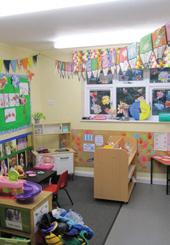
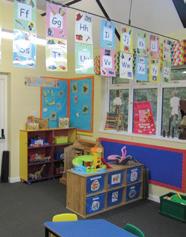


We highly recommend Bumpkins to others. VR, Parent




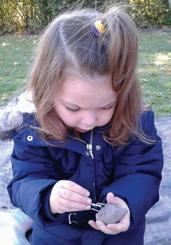



Little Hands
Karen 01763 260964
Melbourn Playgroup
Jane Crawford 07842 151512
Notre Ecole
Janet Whitton 261231
Primary School
Headteacher Stephanie Wilcox 223457
U3A (Univ. of Third Age)
Chairman Tony Garrick 01223 510201
Village College
Principal Simon Holmes 223400
Principal Simon Holmes explains Melbourn’s imaginative approach to reviving pupils’ interest in languages
Language education in schools across the country is facing many challenges. There is no single reason for this, although many will cite the (real or perceived) relative difficulty of language GCSEs, pointing to national subject residuals (statistical differences in performance between subjects) over a number of years.
The more accepted this has become, the more it has entrenched the issue. There is pressure on both schools and pupils to achieve the best grades possible. It’s no wonder then that some are tempted towards ‘easier’ subjects.
This situation has been exacerbated by the increased demands of the new GCSEs, where it seems a potential opportunity for parity has been sadly missed. Add to this ongoing challenges in staff recruitment and the attitude of many English adults towards learning languages, and schools have a real issue.
At Melbourn Village College (MVC) we feel that language learning is not just about learning words. Good language teaching has a vital role to play in widening pupils’ horizons and in giving them an understanding of other cultures. We therefore do our pupils a real disservice if we remove this element from the curriculum.
The Cam Academy Trust, of which we are a part, has international education as one of its five core principles. Arguably, with the world continuing to shrink, the need for a positive attitude towards learning a range of foreign languages has never








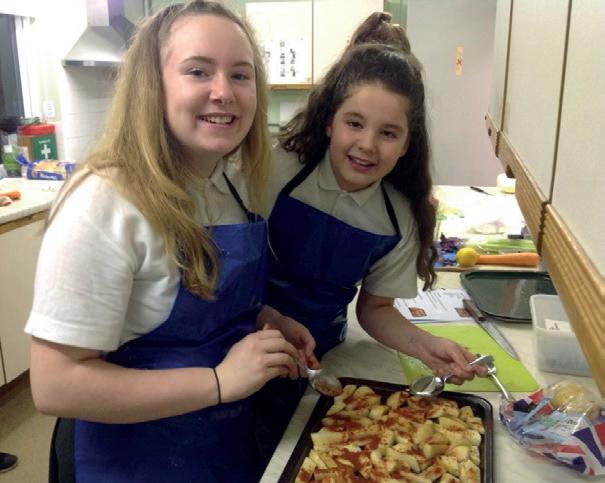










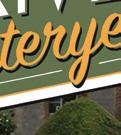
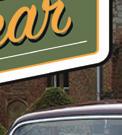





been greater. We want our pupils to embrace the idea of travelling to or working in a foreign country, not be daunted by it.
Our language lessons are backed up by exchanges and other visits, many of which lay the foundations for ongoing friendships. Despite that, alongside many other schools, we have watched the number of students studying French and German decline sharply over the past decade. However, this is only part of the story. Since 2016 we have seen an increase in not only the uptake of GCSE languages but in the profile of language learning across the school.

This has not been a result of compulsion – languages are not mandatory at key stage 4 and as a school we were clear that this was not a path we wanted to follow. Instead, we have listened and reacted to the preferences of our students and have also taken a bold approach to our language provision.
Traditionally, MVC students all studied French in year 7 with the majority adding German in year 8. At key stage 4 they had the option of taking French, German or Spanish. As the popularity of Spanish increased compared to German, we reached a point where it became the logical decision to swap the two, putting Spanish into KS3 in place of German.
Additionally, we undertook a full curriculum review. We consulted research on the future need for languages and began a lengthy process that would result in the introduction of Mandarin Chinese alongside Spanish from September 2016.
We now offer a European and Asian language to all students in year 7, providing a solid base for the rest of key stage 3. This has not been a simple introduction; it has involved research (we visited several lessons at other schools), close work with other agencies (in our case the Institute of Education at UCL) and, most importantly, hinged on us finding an excellent member of staff.
Our first cohort of Chinese classes are now in year 9 and speak highly of their experience. This has been aided by our first Chinese exchange, jointly run with another trust school,
and by participation in the government’s Mandarin Excellence Programme (MEP), which has provided additional funding and opportunities for our pupils. In Year 7 this was a week of Chinese themed activities – a visit to the British Museum in London followed by meal in Chinatown, Chinese cookery and craft sessions in school – a programme designed by us but funded by DfE/MEP. In year 8 this is a heavily subsidised trip to China – our students are paying £400 for two weeks. The MEP is putting in a good deal of funding to support this, including £350 towards flights (all accommodation costs in China are also paid for).
A local sixth form provider, with whom we will probably share staff, has undertaken to provide post-16 study. This arrangement already exists in our trust for shared staff in other subjects – for example we brought in a geography teacher for one day a week a couple of years ago and another school paid for one day a week of a technology teacher for a while this year to cover a temporary vacancy. Many year 9 children and their parents look at options with an eye to post-16 progression so it is important that sixth forms offer languages. This may involve creative solutions and partnership development, but there is an imperative here.
Part of the advantage of doing two such different languages is the way the differences in style (which are much more significant than between two European languages) appeal to different children; mathematical pupils enjoy the ‘codebreaking’ nature of the Chinese characters, for example.
Our approach to languages has been rewarded with increased uptake and some excellent results. FFT Aspire showed our MFL progress in 2018 to be in the top 12% in the country, and indications are that we will have an increased number of pupils choosing to study languages at key stage 4 from September.
We hope that by being innovative and maintaining the high profile of languages we can continue to thrive.
MVC also has the prestigious International School Award,



Home-Start Royston & South Cambridgeshire are looking for Home Visiting Volunteers
Can you give a family the most precious gift - your time?
Our volunteers are all parents or grandparents who can give a few hours a week to help families who are nding it di cult to cope.
All parents need emotional and practical help to get through the rst few years, but not everyone has friends or family nearby. is is when Home-Start volunteers can help! For more details contact Sarah or Jackie at: Home-Start Royston & South Cambridgeshire, Unit 6, Valley Farm, Station Road, Meldreth, Royston, Herts, SG8 6JP
Tel: 01763 262262 or e-mail admin@hsrsc.org.uk www.hsrsc.org.uk
Registered Charity No 1105385
issued by the British Council, at the highest possible level. This is valid for three years and recognises the school’s achievements in offering a truly international education to its students.
Recently, I’ve had the honour and fun of being a guest at MVC’s Citizenship Class. Aged 11–12, these Year 7s don’t have the right to vote, but they are thoughtful, engaged and well-informed. One can’t help coming away without feeling hopeful about the future. The good news, from their own recent in-class survey, is that most intend to exercise their eventual right to vote!

Susan van de Ven.
Are you looking for a new challenge this summer? How about attending one of our Saturday Workshops on 22 June 2019. We currently have spaces on the following courses. Basic Car Maintenance, Bollywood dancing, Drums for beginners and The Grandest Tour – A Journey from Earth to the Edge of the Universe.
Details of our 2019–2020 courses will be available online from mid-June and our brochure will be issued in early July. Autumn term courses commence week beginning 16 September 2019.
Please take a look at our website for further information and to book a place www.sawstonadulted.org
Alternatively, you may contact us via email at community@sawstonvc.org, telephone 01223 712424.

The next course will commence on 24th September 2019. Details nearer the date.











30 High Street Melbourn SG8 6DZ
Telephone: 01763 263303 ext. 3 e-mail: parishclerk@melbournpc.co.uk
Parish Office opening hours: Monday & Tuesday: 9.00am–1.00pm Wednesday, Thursday and Friday: 10.00am–1.00pm
Please note, the office is a busy venue and may occasionally be closed for meetings. Look for the sign on the door. (Alternatively, please call to arrange an appointment) www.melbournpc.co.uk
To contact a


M.P.
Appointments & Dispensary 260220
For repeat prescriptions send email: prescriptions.orchardsurgery@nhs.net




Meldreth Local History Kathryn Betts 268428
Mothers’ Union Pauline Hay 260649

National Trust Marian Bunting 246122 bunting@uwclub.net
New Melbourn Singers Adrian Jacobs 243224

Photographic Club Bruce Huett 232855


Ramblers Dave Allard 242677
01223 245151 Royston 01763 242134
Addenbrooke’s
NHS111 – Urgent Care 111 24hr helpline
Medical help when not a 999 emergency
Police Non Emergency number 101 Help when not a 999 emergency Fire & Rescue Service 01223 376201
Crimestoppers 0800 555111
Neighbourhood Watch debbieclapham@icloud.com
Telephone Preference Service www.tsponline.org.uk 0345 070 0707
Melbourn Playgroup Jane Crawford 07842 151512 Library LAP Jane Stevens johnjane.stevens@tiscali.co.uk
Little Hands Nursery School 260964 Out of school times 01223 503972 Notre Ecole Janet Whitton 261231
Primary School Headteacher Stephanie Wilcox 223457 U3A (Univ. of Third Age)
Chairman Tony Garrick 01223 510201 Hon Sec Hilary Docwra 222486 Mem Sec Chris Davison 264189 Village College Principal Simon Holmes 223400
Age UK Cambridgeshire 01223 221921
Blood Donors 0300 123 23 23 Chiropodist 263260 Dentist 262034
District Nurses (Primary Care Trust) 01223 846122 Home-Start 262262
S. Cambs PCT 35 Orchard Road
Child & Family Nurses 262861 Car Scheme 245228 Osteopath Kath Harry 261716
Air Cadets 2484 (Bassingbourn) Squadron 249156


Tony Kelly Mon & Wed evenings 7 – 9.30 p.m.



Bellringers Barbara Mitchell 261518 Bridge Club Howard Waller 261693
1st Melbourn Rainbows Abigail Roberts 261505 Brownies 1st Melbourn Stephanie Clifford 220272 Brownies 2nd Melbourn 261400
Samantha Pascoe (Brown Owl) Guides 1st Melbourn Hilary Marsh 261443 Luncheon Club at Melbourn Hub (Wednesdays) 263303 op1 MADS (Melbourn Amateur Dramatics Society) Donna Sleight 232622 Melbourn History Group Ann Dekkers 261144 Melbourn Mushroom Club John Holden email: frog.end@virgin.net Melbourn Pottery Club Maggie 01223 207307
Royal British Legion Women Elizabeth Murphy 220841
Royal National Lifeboat Institution Jean Emes 245958
Royston and District Local History Society David Allard 242677
Royston Family History Society Pam Wright frierley@ntlworld.com
Royston Lions Chris Cawdell 448236
RSPB Fowlmere Doug Radford 208978

SOAS (Supporters of All Saints’) Colin Limming 260072


St George’s Allotments Assoc. Bruce Huett brucehuett@compuserve.com
Women’s Group Pat Smith 260103
All Saints’ Church Revd. Elizabeth Shipp 220626 vicar.melbournmeldreth@gmail.com
Churchwardens Roger Mellor 220463 David Farr 221022
Baptist Church Rev. Stuart Clarke 261650
Secretary Brian Orrell 07568 376027
United Reformed Church
Secretary Rosaline Van de Weyer 01223 870869 Hall booking Beryl and Barry Monk 246458


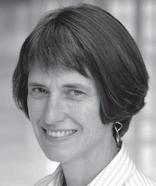


Badminton Steve Jackson 248774
Bowls Arthur Andrews 261990
Croquet Janet Pope 248239
Jazzercise Maxine Rustem 07963 161246
Judo Iain Reid (Chief Instructor) or Lesley Reid 241830 email melbournjudoclub@gmail.com 07974 445710
Melbourn Dynamos FC Gordon Atalker 07770533249 Blake Carrington 07730488743
Melbourn Football Club Simon Gascoyne 261703
Melbourn Sports Centre Graham Johnson-Mack 263313
Meldreth Tennis Club Tracy Aggett 243376
Swimming Club Jenny Brackley 244593
Community Hall
Contact hallbookings@live.co.uk 07821 656033
Dial-A-Ride 01223 506335
Home Start Tracy Aggett 262262
Melbourn Community Hub 263303
Mobile Warden Scheme Jeannie Seers 07808 735066
Moorlands Denise Taylor 260564
Vicarage Close Warden Eileen Allan 263389
Lead Sheltered Housing Officer – Monday to Friday 9–1.30
Vicarage Close, John Impey Way & Elin Way
Eileen Allan Mobile 07876 791419 / 245402
Every other week. 9–5 Monday to Friday

Saturday 1
Coffee Stop ASCH 10.30am The Bookshelf Safari Supper contact 260686 / 260306 for details
Sunday 2
Said Eucharist All Saints 8am
Family Service Baptist Church 10.30am Holy Communion URC 11.00am Baptist Communion 6pm
Monday 3
Drop-in Surgery with Councillors at the Hub 3 – 4pm Melbourn Bridge Club every Monday URC Hall 7pm contact Howard Waller 261693
Tuesday 4
Toddler Plus Baptist Church 9.30-11.30am (TT) Melbourn Bridge Club 2pm contact as above Wednesday 5
Craft Club 9.30am Coffee Break Baptist Church 10.30am Thursday 6
Said Eucharist All Saints 10am Craft & Chat URC 2-4pm weekly
Friday 7







Coffee URC 10.30am
Saturday 8
Coffee Stop ASCH 10.30am British Legion stall Cambridgeshire Family History Society Central Library see article
Sunday 9
Sung Eucharist All Saints 9.45am Baptist Church Service 10.30am URC Service 11am
A10 Cycle Awareness Ride see article
Tuesday 11
Toddler Plus Baptist Church 9.30-11.30am (TT)
Melbourn Short Story Reading Group at the Hub 10-11am
Mothers’ Union contact Diane Blundell 221415
Homestart Literary Lunch see article
Wednesday 12
Craft Club 9.30am Coffee Break Baptist Church 10.30am Hub Club Lunch 12.30pm
Thursday 13
Said Eucharist All Saints 10am Craft & Chat URC 2-4pm
Coffee URC 10.30am
Saturday 15
Coffee Stop ASCH 10.30am Meldreth Fete see article
Sunday 16
Said Eucharist All Saints 8am
Sundays @ 11 Family Service All Saints 11am
URC Service 11am
Communion Service Baptist 10.30am Melbourn Open Gardens 11-4pm see article
Tuesday 18
Toddlers Plus 9.30-11.30am (TT) Baptist Church
Wednesday 19
Craft Club Baptist Church 9.30 -11.30am Coffee Break Baptist Church 10.30am
Thursday 20
Sung Eucharist Corpus Christie All Saints 7.30pm Craft & Chat URC 2-4pm
Coffee URC 10.30am
Little Lambs Baptist Church 10-11.30am Melbourn Cinema Night ASCH Stan & Ollie 8pm tickets 260686 / 261154
Saturday 22
Coffee Stop ASCH 10.30am
Sunday 23
Sung Eucharist All Saints 9.45am URC Service 11.00am
Morning Service Baptist Church 10.30am Foxton Open Gardens 1.30-5pm see article
Tuesday 25
Toddlers Plus 9.30-11.30 (TT) Women’s Group Meldreth contact Pat Smith 262575
Wednesday 26
Craft Club Baptist Church 9.30am Coffee Break Baptist Church 10.30am British Legion Women’s Section at Vicarage Close 2pm Melbourn WI ASCH 7.45pm Acting Up
Thursday 27
Said Eucharist All Saints 10am Craft & Chat URC 2-4pm
Friday 28
Coffee URC 10.30am
Saturday 29
Coffee Stop ASCH 10.30am Melbourn After Eights WI stall
Said Eucharist All Saints 8am
URC Service 11.00am
Morning Service Baptist Church 10.30am
Drop in Surgery with Councilors at the Hub 3-4pm
Melbourn Bridge Club every Monday URC 7pm contact Howard Waller 261693
Tuesday 2
Toddlers Plus Baptist Church 10.30am (TT)
Melbourn Bridge Club every Tuesday URC Hall 2pm contact Howard Waller 261693
Melbourn Short Story Reading Group every Tuesday 10-11am the Hub
Wednesday 3
Craft Club 9.30am (TT) Coffee Break Baptist Church 10.30am
Said Eucharist All Saints 10am
Craft & Chat URC weekly 2-4pm
Friday 5
Coffee at URC 10.30am
Saturday 6
Coffee Stop ASCH 10.30am The Bookshelf
Sunday 7
Said Eucharist All Saints 8am Morning Service Baptist Church 10.30am
Communion Service Baptist Church 6pm Holy Communion URC 11am
Communion Service Baptist Church 6pm
Tuesday 9
Toddlers Plus Baptist Church 9.30-11.30am (TT)
Mothers Union contact Diane Blundell 221415
Wednesday 10
Craft Club 9.30-11.30am (TT) Coffee Break Baptist Church 10.30am Hub Club Lunch 12.30pm
Thursday 11
Said Eucharist All Saints 10am Craft & Chat URC weekly 2-4pm
Melbourn-Royston Cycle Path Group The Hub 6.30-8.30pm
Friday 12
Coffee at URC 10.30am
Saturday 13
Coffee Stop ASCH 10.30am
Community Showcase 12-4pm and evening entertainment from 7pm at The Hub
Sunday 14
Sung Eucharist All Saints 9.45am Morning Service Baptist Church 10.30am URC Service 11am
Tuesday 16
Toddlers Plus Baptist Church 9.30-11.30am (TT)
Wednesday 17
Craft Club 9.30-11.30am (TT) Coffee Break Baptist Church 10.30am
Thursday 18
Said Eucharist All Saints 10am Craft & Chat URC weekly 2-4pm
Friday 19
Coffee at URC 10.30am
Melbourn Cinema Night ASCH 8pm Green Book tickets 261154/260686
Saturday 20
Coffee Stop ASCH 10.30am
Sunday 21
Said Eucharist 8am All Saints Sundays @ 11 Family Service 11am All Saints Morning Service Baptist Church 10.30am URC Service 11am
Tuesday 23
End of term
Toddlers Plus 9.30am (TTs Women’s Group Meldreth 7.45pm contact Pat Smith 262575
Wednesday 24
Coffee Break Baptist Church 10.30am
British Legion Women’s Section Vicarage Close 2pm Melbourn WI ASCH 7.45pm Melbourn Miscellany
Thursday 25

Said Eucharist All Saints 10am Craft & Chat URC weekly 2-4pm
Friday 26
Coffee at URC 10.30am
Saturday 27
Coffee Stop All Saints 10.30am
Sunday 28
Sung Eucharist All Saints 9.45am
Family Service Baptist Church 10.30am URC Service 11am
Wednesday 31
Coffee Break Baptist Church 10.30am







Thursday 1
Craft & Chat URC 2-4pm weekly
Friday 2
Coffee at URC 10.30am
Saturday 3
Coffee Stop ASCH 10.30am The Bookshelf
Sunday 4
Said Eucharist All Saints 8am Ligth & Deep Summer Service Baptist Church 10.30am URC Communion Service 11am Communion Service Baptist Church 6pm Kite Festival The Heath Royston
Monday 5
Drop in Surgery with Councillors at The Hub 3-4pm Melbourn Bridge Club every Monday URC Hall 7pm contact Howard Waller 261693
Tuesday 6
Summer Holiday Club Baptist Church Melbourn Bridge Club every Tuesday URC Hall 2pm contact Howard Waller 261693 Melbourn Short Story Reading Group The Hub 10-11am weekly
Wednesday 7
Summer Holiday Club Baptist Church Coffee Break Baptist Church 10.30am
Thursday 8
Summer Holiday Club Baptist Church Craft & Chat URC 2-4pm weekly
Friday 9








Summer Holiday Club Baptist Church Coffee at URC 10.30am
Saturday 10
Coffee Stop ASCH 10.30am
Sunday 11
Sung Eucharist 9.45am All Saints Light & Deep Baptist Service 10.30am
Tuesday 13
Mother’s Union contact Diane Blundell 221415

Wednesday 14
Coffee Break Baptist Church 10.30am Hub Club lunch 12.30pm
Thursday 15
Craft & Chat URC 2-4pm weekly
Friday 16 Coffee at URC 10.30am
Sunday 18
Said Eucharist All Saints 8am Sundays @ 11
We shall be pleased to receive contributions in any form, articles, poems, drawings, photographs, letters etc., pertaining to Melbourn. Please send any contributions to the Editor, at 110 High Street, Melbourn, marking them ‘MELBOURN MAGAZINE’ or you can email them to melbournmagazine@gmail.com
Family Service All Saints 11.00am
URC Morning Service 11am
Light & Deep Communion Service Baptist Church 10.30am



Wednesday 21
Coffee Break Baptist Church 10.30am
Thursday 22
Craft & Chat URC 2-4pm weekly
Friday 23
Coffee at URC 10.30am
Melbourn Cinema Night ASCH Fisherman’s Friends 8pm tickets 261154/260686
Saturday 24
Coffee Stop at ASCH 10.30am
Sunday 25
Sung Eucharist All Saints 9.45am
Light & Deep Summer Service Baptist Church 10.30am
URC Morning Service 11am
Tuesday 27
Women’s Group Meldreth contact Pat Smith 262575
Children’s Holiday Club Baptist Church am Wednesday 28
Children’s Holiday Club Baptist Church am
Coffee Break Baptist Church 10.30am
Royal British Legion Women’s Section Vicarage Close 2pm
Melbourn WI ASCH 7.45pm Cheers!
Thursday 29
Children’s Holiday Club Baptist Church am Friday 30
Children’s Holiday Club Baptist Church am Coffee URC 10.30am
date for the next issue is Friday 18th July which will be published in September, listing events in September, October and November.


Melbourn Magazine isdelivered free to everyhousehold in the villageby volunteers.
If you would like to help pleasecontact Ann Dekkers on 261144
Monday to Friday 8:30–1pm and 3pm–6pm
01763 260220
Repeat prescriptions can be made either, by post, in person or by registering to use the online NHS service.

can still be collected from: Surgery Co-op Tesco in Royston
Home Delivery
surgery offers home delivery service for prescriptions, on a Tuesday & Thursday.
more information on any of the above, please see their website or contact the surgery.

Drop in clinics for parents and babies are held as follows: Melbourn clinic every Wednesday between 9.30am and 11.00am at:
Orchard Road, Melbourn.
01763 262861
Help
impact of
loss on daily lives.
hold a drop-in Hearing Help session in MELBOURN
fourth Thursday of
month, from 2.00pm to 4.00pm,
maintenance of NHS hearing aids, including cleaning
re-tubing of hearing aids, supplying free replacement
and free advice on using a hearing aid.
appointment is necessary.
us at Vicarage Close Community Room, Melbourn, SG8 6DY
more information: www.cambridgeshirehearinghelp.org.uk
416141 Text: 07852 699196 enquiries@cambridgeshirehearinghelp.org.uk


low
note bin dates
an update on


Imagine the following: people ill due to poor water quality and bad or even absent sanitation; a place with just one well per 80-100 people; almost no running water; very few latrines; a child mortality rate of 15%; and adult life expectancy of 40-42 years. Meanwhile, annual rainfall is no more than 15 to 23 inches.

And where is this? Just down the road in Royston in 1850. But, it is the situation today in less fortunate places of the world. The rainfall rates are comparable; community density is very similar. The problems these communities face –poor water quality and poor access to good sanitation – are the same as Royston in 1850.
So what changed in the UK? Following terrible cholera epidemics in the early 19th Century, a link was established between water quality and illness, namely, water-borne diseases. This was due to pioneering work in London by Dr John Snow. Resultant investment in water supply led to an initial 23% reduction in mortality rates due to cholera and diarrhoea, rising to 48% and an associated increase in adult life expectancy of around 10 years on average. A move to the municipalisation of water works reduced disease rates further between 1869 and 1910.
Working with WaterAid in Nepal some 16 years ago I found this fundamental problem of poor water supply and management. The work examined the legacy of failed borehole projects to identify areas of possible improvement. The focus was on displaced communities in the foothills of Nepal’s mountain region where there had been no hydrogeological planning of boreholes resulting in a high failure rate. These
communities faced: poor planning and management of water supply and waste disposal; limited community ‘ownership’ of water sources; and a bias in provision towards more vocal and coordinated, yet less needy groups. Also, equipment was in poor condition because of no maintenance and training failures, allied with difficulty in sourcing spare parts.
Compounding these problems associated with boreholes and pumps, developing action against contamination of springs and wells was also important. Protection reduces contamination by as much as 66% and reduces illness in children by at least 11%. A good adage for farm management both here and there is ‘Take the water to the cow, not the cow to the water!’ The same applies to people as it reduces the risk of contamination, and in dairy cows increases yields by up to 30%!
Water-borne illness, however, is not a feature confined to deprived areas of the world. A contaminated well in 1937, supplying 40,000 people in Croydon, resulted in 341 cases of typhoid and 43 deaths. In 1993, cryptosporidium in Wisconsin, Milwaukee affected 440,000 and caused 110 deaths. More recently, cryptosporidium was found in 2008 in the Pitsford Works Reservoir in Northampton.

So the lessons for ‘Villages Here and Villages There’ are the same: good water hygiene is vital for health; the protection of water supplies is crucial; the management of water supplies is essential as is the management of water resources. We should all be aware of these issues and advocate – loudly and long –on behalf of those who are today still without access to clean water and proper sanitation.
Tim Baker Principal Hydrogeologist & Managing Director B.A. Hydro Solutions Limited, Shepreth
An edited version of a talk delivered in Royston Museum in March 2019
Melbourn is fortunate to have a number of nature reserves on its doorstep – Stockbridge Meadows in Dolphin Lane, Melwood in Meldreth (both regularly featured in the magazine) and Fowlmere RSPB Nature Reserve. What some residents may not be aware of is that a small part of the RSPB reserve sits with in the parish of Melbourn.

In 1977 the RSPB purchased 65 acres of land which was part of a former water-cress farm, from money raised by the Young Ornithologists’ Club (YOC), known today as the Wildlife Explorers.
Interestingly, before the area became a reserve, the owner Hugh Stovin, a golf course developer had plans to develop it into a wildlife park, and sought planning permission to adapt the land. His business partner was to be a wellknown British naturalist, author and broadcaster of the 70s, Grahame Dangerfield.
Dangerfield had a private menagerie of largely British wildlife and several species from around the world including: servals,
A family of swans at one of the former water-cress beds on the reserve. Water-cress can be seen growing across the bottom and up along the lefthand side of the picture. Also on the left, a concrete walk-way being used by the swans, a left over from the days of water-cress production. On the right in the centre you can just see the ripples from one of the natural springs

eagles, falcons, owls and Arctic foxes, to name but a few. However, planning permission for the new venture was refused in 1972, partly because the area had been designated a Site of Special Scientific Interest (SSSI).
The old water-cress beds today, consist of marshy grassland, open water and reed-beds, and is a veritable habitat of fauna and flora. Over 300 varieties of plants have been recorded at the site and well over 200 species of animals, including birds (resident and visiting), dear, fish, and reptiles.


A valuable source of clear-water coming from underground chalk aquifers via springs feeds into the various water courses and into the River Shep, a rare chalk stream, providing the ideal habitat for a variety of creatures to breed and thrive. It is home to brown trout and water vole.
With so many varieties of birds and animals visiting the site or just passing through, there is usually a good chance to find some interesting wildlife. In spring and summer, the reserve is one of the best places in the East of England to hear and see the rare turtle dove. The water vole, another rare species can sometimes be seen sitting on the bank feeding.
It’s hard to imagine today, that the land between Melbourn and Fowlmere was once a great expanse of marshy land, swamp and open water. Fed by natural springs and dominated by grasses and reeds, the area was said to have covered over 300 acres and was known as Melbourn and Fowlmere Moor.
Much of the marshland sat within the parish of Fowlmere and because of its similarities to the Fens north of Cambridge, it was often referred to by naturalists visiting the site as ‘Fowlmire Fen’ (a name that has stuck to this day). Although it’s difficult to visualise how this vast area of land would have looked, the RSPB reserve with its mere, marshy areas and reed beds is a good if not small example. To give you some idea of the amount of water that was possibly there, a document from the early 1800s referred to the area as The Lakes.
The land would have provided food for the locals not only fish such as carp, pike, trout and eel, but various wildfowl, rabbits and pheasants. It also provided employment for men and women. Some of the jobs were unusual and included fowling, leech gathering and frog fishing.
The marshes were abundant with wildfowl, so it is somewhat ironic that given the protected nature of the site today, the area
Melbourn and Fowlmere Moor once a great expanse of marshy land, swamp and open water. As you can see on the map below, the Moor stretched up into Shepreth (known as Dunsbridge Gate) across into Meldreth (Rights Moor) and back into Melbourn to the Moor where the village college stands



These maps have been created using a number of sources including a distorted 19th century etched printing plate. The area highlighting the Moor is to offer an idea on how it could have covered the surrounding countryside. Due to the quality of the image of the etching the area shown is not accurate

once attracted people from all over, to shoot the wild geese, ducks and waders. Eighteenth century documents suggest that the birds from the Moor were sold on Cambridge market and sent to markets in London.
Locals also earned a wage from taking the ‘young gentleman’ from the University of Cambridge out in their punts for a day’s shooting. If the students were unlucky on the day, the locals would happily sell them a few birds, so they could at least show their fellow students how good they were at the sport. Below is a poem from the late 1800’s on the ‘fowling’ on the Moor.
The Girt Moor wor a Moor – an’ glory to boot Nuff’n like it in England and Wales

Wi’ its duck, swan, geese, widgeon, teal, tern and coot

Which sportsman came ’undreds o’ miles for to shoot And its frogs, wot were called Nightingales. The marshes also provided the perfect breeding ground for medicinal leeches. Used in blood-letting, they were in growing demand in 19th century. Locals were employed as leech gatherers to collect leeches by wading around the swamp, baring their legs whilst the leeches attached themselves. After about twenty to thirty minutes, after
the leeches have gorged themselves they dropped off and were put into containers. The workers were poorly paid and many suffered from infections spread by the leeches and the effects of blood loss, since it would take at least 10 hours for the wounds to heel.
Following an encounter with a leech gatherer, William Wordsworth the poet described their work in his poem Resolution and Independence, written in 1802.
He told, that to these waters he had come
To gather leeches, being old and poor:
Employment hazardous and wearisome!

And he had many hardships to endure:


From pond to pond he roamed, from moor to moor;

Housing, with God’s good help, by choice or chance, And in this way, he gained an honest maintenance. He with a smile did then his words repeat; And said, that, gathering leeches, far and wide He travelled; stirring thus about his feet
The waters of the pools where they abide.
“Once I could meet with them on every side; But they have dwindled long by slow decay; Yet still I persevere, and find them where I may.”
Amongst the common frogs and toads found on the Fen, there was once a rare species known as the Edible Frog. Rare because this particular species was said to be exclusive to these marshes and one other site in Norfolk. They were in abundance on the Moor and because of their constant chatter, a call that was not the typical croak, they were known locally as Cambridgeshire Nightingales. They were described by one local as “much like other frogs, only girt big fellers and more yellow on the back”.
The species in the marshes was confirmed in 1843 after a specimen was sent to the British Museum, although documentation suggests they had been around the Moors for at least a century before. However, their ‘official’ confirmation was academic as a few years after their so-called discovery, the species was wiped out from the area when the marshes were drained.
Whether the frog was indigenous or introduced to the area is unknown, but one early suggestion was that monks coming over from Italy to collect rent due from a Priory in Chesterton in Cambridge, brought the frogs with them.
They were a staple diet for many throughout much of Europe, encouraged by the Catholic Church, when in the 13th century it decreed that the frog, much like the duck and other water fowl ‘could not possibly be meat’ since their ‘natural habitat was as much terrestrial as aquatic’. This allowed the ‘non-meat’ to be eaten during Lent and on Fridays, when all other meat was banned. In France, the frogs were given the nickname ‘Alouettes de Carême’ (known in English as Lenten larks).
Frogs may not be a typical British culinary delight today (unless you visit a French or Chinese restaurant), but they were many years ago when people would have little choice but to eat whatever was available. Thomas Coryate, a 17th century writer of travel books when on a visit to London wrote “I did eate fried Frogges in this citie, which is a dish much used in many cities of Italy.” In 1602, Thomas was said to have introduced the English to ‘Frog Pie’. However, it appears we have been eating frogs for some time. At an archaeological dig in Amesbury in Wiltshire in 2014 cooked bones of frog legs were discovered, dating back almost 9000 years.
Fortunately, common frogs and common toads can still be seen at the RSPB reserve – just not the edible one!
By 1847 much of the Moor had been drained to make way for agriculture. The area around the RSPB reserve was difficult to drain and so the land was later given over to water cress production. The natural fresh water springs at the site provided the perfect environment. To improve the water flow, boreholes were driven into the ground to the natural aquifers to create additional springs. By the 1960s there was over 100 acres of water cress beds.
The water cress was washed and packed on site and taken to Shepreth station and then onto Covent Garden Market in London. Production continued on part of the site until the 1960s when it was abandoned. The area became overgrown with reeds and it was this land that was sold to the RSPB in 1977.
Water cress continued to be grown around Black Peak up to the early 1980s when the water flow from the springs became a problem. Despite the introduction of a new pumping system to feed water from a borehole to Black Peak, production ceased. In 1985 the remaining land, around 35 acres was also sold to the RSPB. The small water cress washing shed can still be seen at the reserve.
Large parallel water channels were dug close to the water-cress beds to create a trout farm and a fish breeding pen. The channels can still be seen today.


The importance of the land around the springs at Black Peak is proven by its occupation throughout our history. From the southern edge of the RSPB reserve and close to the springs is an Iron Age enclosure. It would have been a small settlement surrounded by a bank and ditch. It’s from here that Bran Ditch (also known as Heydon Ditch) begins. This Anglo-Saxon defensive ‘wall and ditch’ runs alongside the Iron Age enclosure and forms the parish boundary between Melbourn and Fowlmere. It extends for 5km in an almost straight line to Heydon. It was the first of four defensive walls built between Black Peak and Newmarket.
Bran Ditch. There is little to see today of the Anglo-Saxon defensive ‘wall and ditch’. This photograph looking south towards Heydon shows Bran Ditch as a slight ridge on the right.

Excavations carried out at Black Peak and on Bran Ditch revealed an Iron Age ditch and a Roman settlement and cemetery beneath the dyke. Finds include pottery sherds and a beehive quern. This site would have had links to the Roman garrison said to be close to Portway where complete Roman flagons and bowls were found.
A Roman flagon, bowl and quern found at the Roman settlements near Black Peak



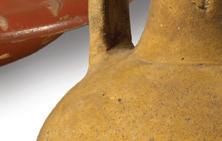
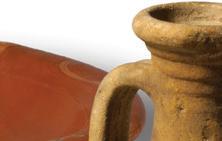




During excavations at Black Peak over 50 Anglo-Saxon bodies were found buried, mostly men but some were boys. It was suggested that a massacre or execution had taken place as the victims had been killed in a gruesome fashion. (See A Glimpse into Melbourn’s Past pp.14–15 for more information.)


As a point of interest, there is no information that explains how Black Peak got its name. However, in the journal The Zoologist published in 1847, one naturalist visiting the Fen spoke of the problems with the Springs, “… the rise of water is not sufficiently rapid to prevent black mud accumulating at the bottom”. Just a thought!

 Peter Simmonett
Peter Simmonett
References




The Zoologist – A Monthly Journal of Natural History (1846-7); Handbook to the Natural History of Cambridgeshire (1904); Meals Medical with Herbal Simples of Edible Parts (1905); A Mere Village – A history of Fowlmere Cambridgeshire (1993); A Glimpse into Melbourn’s past (2004); Fowlmere RSPB Nature Reserve a Wildlife Oasis. Leslie Price (2013)








Harvard graduate and journalist at the New Yorker Elif Batuman provides here a witty and self-reflective novel. The Idiot is set in 1995 and follows Selin, a young female Harvard student perplexed by the idea of an e-mail address but who finds herself falling in love with Ivan, a fellow student with whom she enters into an electronic back and forth. The title is a nod to Dostoyevsky’s novel of the same name and, much like that novel, the story itself is shrouded in elements of Russian literature as we see Ivan and Selin step into the roles of the characters they are reading in their Russian language class.
While language is Selin’s passion it also acts as a barrier. Ivan, too afraid to give life to the textual relationship they have, rejects her whenever she begins to step out of the character of a novel, to move off the page of an email and into her own skin. Selin, on the recommendation of Ivan, signs up to teach English in a Hungarian village where she’s introduced to different families, all the while occupied by thoughts of her e-romance. Selin waiting for a call on the local landline creates a once familiar tension as Batuman throws us back to a time where we can all remember waiting for a phone call that may never come.
The Idiot is a perfect balance of contemporary prose peppered with Russian narrative conventions. We can see the personal connection to Selin that Batuman has, bringing her experience as a Harvard graduate into play to make Selin so well-rounded and fleshed out. The infiltration of different characters mimics the classic narratives of the Russian novel – but in a much less confusing way! Batuman’s love of language comes across on every page. She avoids the trap concerning Selin and her problems – which are wholly relatable and therefore completely cringe worthy – but emphasises the heartfelt terror, longing and confusion of a time in a person’s life that can be so easily dismissed as ‘just being young’.
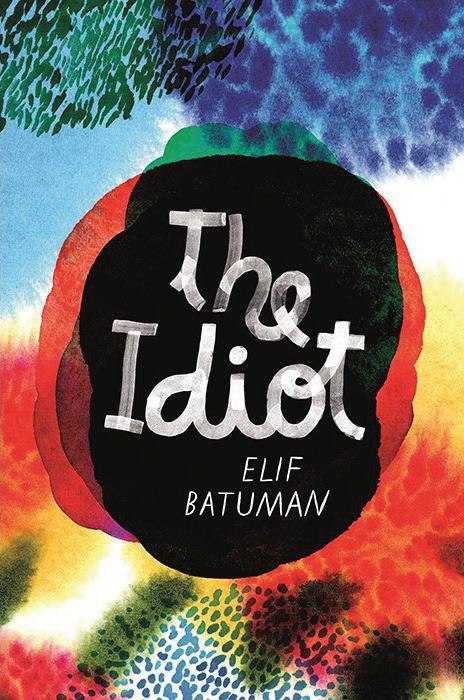
A worthy finalist for the 2018 Pulitzer Prize in Literature, The Idiot is a clever and relatable read with hilarity tossed in for good measure. Lovers of Russian literature will appreciate the form the story takes, but you don’t have to be ‘down with Dostoyevsky’ to become engrossed in the world Batuman has created for us to enjoy.
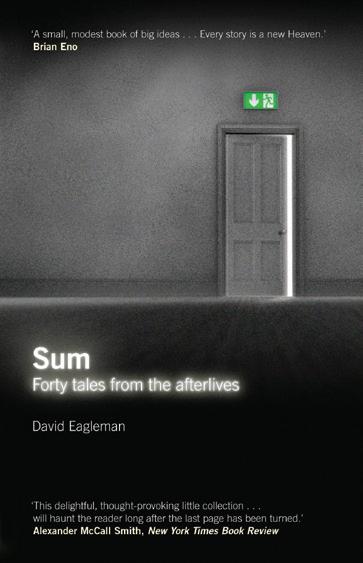 By David Eagleman Canongate Books
By David Eagleman Canongate Books
“By the way, I have been wondering what the special place in Hell looks like, for those who promoted Brexit, without even a sketch of a plan of how to carry it out safely.”
Donald Tusk, President, European Council, 6 February 2019
Do you, like Donald Tusk, ever think of the bigger questions of life: the origin of evil; the nature of God; is there an afterlife? I often think my good deeds (being so few!) will torment me in the afterlife. I see myself banished, eternally toiling in an overheated windowless basement below the glorious mansion with many rooms which has been prepared for us. You, undoubtedly, having lived a life filled with good deeds, will be recognised, feted, and then escorted through the mansion to a well-deserved penthouse suite. Whether your afterlife expectation is fiery flames in a crowded basement or a penthouse suite this slim volume will today bring you enjoyment and cause for reflection.
I was reading these accounts of possible afterlives when Donald Tusk – very appropriately as a European leader reflecting on that great European literary work Dante’s ‘Divine Comedy’ – made the above controversial observations on Brexit promoters and the afterlife. Just as all of us are today astonished at the here and now afterlife of our 2016 Brexit decision, the same Donald Tusk on this side of the pearly gates might be surprised at the post-death lives as here revealed by neuroscientist and journalist David Eagleman. It is a little volume of 110 pages – thought provoking in a restrained fashion, highly inventive, original and gently humorous. It comprises forty self-contained simple to read essays each of only a few pages but all from an outrageously off-beat perspective. Each will cause you to sit up, smile and think. Some examples from a few of the essays:
“In the afterlife you relive all your experiences, but this time with the events reshuffled into a new order: all the moments that share a quality are grouped together …. Six days clipping your nails. Fifteen months looking for lost items. Eighteen months waiting in line.” (Sum p3)
“What we call God is actually a married couple … They separated (and then got back together).” (Missing pp26-27)
“In the afterlife you discover that your Creator is a species of small, dim-witted, obtuse creatures.” (Spirals p29)




“So when you arrive here, you are split into your multiple selves at all possible ages. That you that existed as a single identity is now all ages at once. These pieces of you no longer get older but remain ageless into perpetuity. The yous have transcended time.” (Prism p72)
“After a store closes its doors on its final evening, or a congress wraps its final session, the participants amble away, feeling that they were part of something larger than themselves, something they intuit had a life even though they can’t quite put a finger on it. In

The sticky, black mud lay all around, Rain making it worse as the soldiers found


As they struggled and squelched all through the day Making everyone wish they were far, far away.




The rain didn’t drown out the sound of the shots, Bullets flew through the air, finding their spots.
It didn’t drown out the sounds of the screams, As my friends lay there dying, ending their dreams.
It didn’t drown out the thoughts in my head Of the families back home, their children now dead. But it did drown out the light in my eyes, Regretting I’ll never say my final goodbyes.
this way, death is not only for humans but for everything that existed. And it turns out that anything which enjoys life enjoys an afterlife.” (Ineffable p75)
“There is not a single God but many. Each rules a separate territory …. One God has control over objects that are made of chrome. Another over flags. Another over bacteria …” (Pantheon p77)
“Here in the afterlife, everything exists in all possible states at once, even states that are mutually exclusive. This comes as a shock after your Earthly life…” (Quantum p82)
“In the afterlife you are judged not against other people, but against yourself. Specifically, you are judged against what you could have been. So the afterlife is much like the present world, but it now includes all the yous that could have been.” (Subjunctive p104)
I ended this volume with a rueful smile thinking: “Just like our Brexit afterlife – who would have thought it?”
Readers with an interest in visual art matters, particularly as it pertains to graphic art and design in the area of book jackets, will be interested in this little volume’s remarkable jacket cover and how it complements the unique, quirky and slightly surreal nature of the writing and subject matter. The front cover shows fantastic use of shades of dark colour - black shading up the cover to a light whitish grey at the top. The top right quarter reveals a door slightly ajar (to the afterlife) and does so using a very discreet and almost invisible cut in the cardboard cover. Above this obscured almost implied slightly open door – rather playfully – is a small EXIT sign, rectangular and in a starkly different colour as such warning signs usually are to grab attention, namely, a bright green and white background with a man figure running and a broad arrow pointing downwards to the door slightly ajar. Ingenious! We are all of us going in the same direction – unpalatable as that undoubtedly is to some amongst us. Hugh Pollock

Tibet -the revival of an ancient culture

Tibet captured the imagination of nineteenth century explorers. The few that succeeded in getting past its protected borders came back with stories of very different lifestyles, wonderful temples and exotic Buddhist rituals. The description of the Lama in Rudyard Kipling’s Kim helped to foster this image of a strange and wonderful land.
The earliest Europeans who got into Tibet were Catholic missionaries in the 17th and 18th centuries. One was so successful in the West of the country that the Tibetans called in an army from neighbouring Ladakh to drive him out. Later George Bogle, a Scotsman, married the sister of an important lama in around 1774 and introduced potatoes to Tibet, now an important crop. Alexandra David-Neal, an extraordinary female explorer, was the first woman to visit Lhasa in 1923. She described her adventures in “My Journey to Lhasa”.
Buddhism probably arrived in Tibet from India in the 7th century, with later Chinese influences, displacing the indigenous religion now called Bon or Bonpo. This now has many similarities with Buddhism, but was probably an animist religion focusing on worship of ‘gods of the place’. Certainly, shamanism, oracles and forms of spirit position are still common in Tibet (although officially banned).
The arrival of Buddhism was linked to the Tibetan Empire which reached its peak in the 7th/ 8th centuries CE (in 763 Tibet conquered the Chinese capital at Xian). The most famous emperor was Songsten Gampo who reigned between 618 and 650 and had a Chinese and Nepalese Queen – consolidating his political links to the East and South. He is credited with introducing a written language and paper making; both important for the administration of an empire and production of Buddhist texts in the local language.
For the British the image of an exotic Buddhist land was enhanced when mule loads of items were brought

back after the British invasion of Tibet in 1904. The chief collector, Laurence Waddell, obtained a wonderous collection of cultural artefacts, including many illuminated documents now in the Cambridge University library. Later British administrators also brought back items now in the Cambridge Museum of Archaeology and Anthropology which were displayed in an exhibition in 2014: Buddha’s Word (catalogue still available).
Other features of Tibetan temples are the exquisite frescos and the tangkas (cloth paintings). I have met tangka and fresco painters and explored the process from the ritualistic grinding and mixing of the pigments to the final blessing of the completed work. The skills are carefully passed down from master to pupil across generations.
Large sculptures of protector gods and Buddhist ‘saints’ are situated at the entrance and around the halls. Tibetans were particularly skilled in making bronze and wood sculptures.
The temple architecture is distinctive, using massive wooden pillars and thick walls to encompass large devotional halls often with a huge Buddha statue as the key focal point. This is particularly impressive as large trees don’t grow on
the Tibetan plateau so they had to be transported from afar. Walls and floors are made of rammed mud mortar. The production process, dating back to the 7th century, is an experience in itself as the workers ram down the material while chanting inspirational songs.
Butter lamps are placed all around the ‘altar’ and during services the smoke, scent of incense, exotic music (drums, cymbals, bells, conch shells and five foot horns) together with the chanting of the monks creates a highly emotive atmosphere.
Sadly much of this cultural heritage was destroyed during the cultural revolution starting in 1966. Precious documents, wood blocks for printing, scriptures and tangkas were lost and many of the temples were raised to the ground and materials used for house building. I have seen remote caves full haphazard piles of 11th century documents waiting to be recovered and restored. Luckily in recent years there has been a sustained campaign by devotees to find these documents and then sort and reconstitute the original volumes (Tibetan religious documents are not stitch bound but are single sheets between wooden covers, tied up in cloth). Cambridge University has facilitated the return of facsimiles of sacred texts held in the British Library (which had been lost in Tibet) to be returned to their original temples.
Since the 1980s the Chinese government has actively promoted restoration of temple buildings and now most have been rebuilt with new murals, statues and tangkas. The holiest temple in Tibet is the Jokhang in the capital Lhasa where the most famous Buddha statue in Tibet is located: the Jowo. As in Bhutan, government buildings are also temples. The most famous is the Potola palace, also in Lhasa, which was the seat of the Dalai Lama, the spiritual and secular head of Tibet, until he fled to India in 1959. Ancient temples: the Phags pa wa ti, dating back to the seventh century, and Byams sprin lha khang, survive in Gyirong.
This revival of cultural heritage is supported in other areas and I have researched the revival of traditional paper making in Tibet, now classified as a UNESCO intangible cultural heritage.
In fact, visiting temples in Tibet has become a major tourist industry targeted at the eastern Chinese population. This is linked to an increasing interest in Tibetan Buddhism in China, facilitated by social media. For example, lamas in New York being consulted for spiritual advice from Tibet on mobile phones.



In the next article, I will describe the lifestyle of Tibetans, many still nomadic, living in harsh conditions on the roof of the world.
Bruce HuettPersonal care and a�en�on

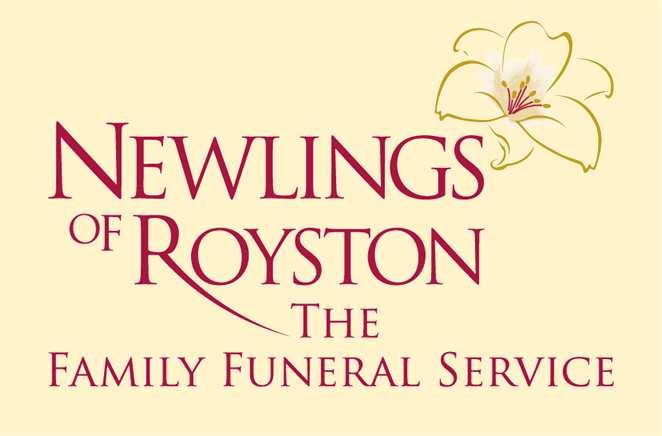





We marked Homelessness Sunday at the end of January when we were pleased to welcome Lisa Wilson (a student from Westminster College) to lead our worship. Lisa dedicated the donations of knitted items from our Craft Group along with items of food, clothing and toiletries which were taken to Jimmy’s Night Shelter in Cambridge later that week where they were gratefully received.

and His kingdom is open to all. We enjoyed a social time afterwards with cake, biscuits and a cuppa including some Welsh cakes as it was also St David’s day.
Junior Church made some delicious cakes from Fairtrade ingredients on 3rd March for the congregation to enjoy after the Sunday service with their coffee. We were able to send £52 to the Fairtrade Foundation to support their work in addressing the injustices of conventional trade which traditionally discriminates against the poorest, weakest producers.

All three denominations took part in the service held in our church on Friday 1st March. The service was prepared by the Christian women of Slovenia with the theme “Come Everything is Ready” based on Jesus’ parable from Luke’s Gospel chapter 14. The people invited to dinner did not come so the poor, crippled, blind, lame and others were brought in from the streets to dine instead. Those originally invited missed out. It is a reminder that we are all God’s children
Our morning worship was led by Maureen Kendall who brought with her various items representing Jesus’ betrayal and journey to the cross. The items were a handkerchief, thirty pieces of silver, bread roll, sword, cock feathers, flail and three nails. Maureen read the relevant passages from the bible which referred to these items. The children handed out palm crosses to the congregation.








Our Good Friday morning service was led by Eirwen Karner and took us through Jesus’ journey to the cross with bible readings interspersed with hymns and prayers. We also heard the thoughts of Peter, Pilate and a bystander at the crucifixion. Peter spoke of his denial of Jesus, Pilate spoke of his denial of responsibility and the bystander described what he had witnessed and although Jesus’ words were “It is finished” concluded that it was far from over and it was just the beginning. We enjoyed coffee and hot cross buns after the service.
Easter Sunday we were able to celebrate Jesus’ resurrection who made the ultimate sacrifice for us on the cross on Good Friday so that we may have eternal life. The service included the sacrament of Holy Communion.
The 500 eggs decorating our tree and church grounds have been decorated over the last few years by a variety of groups in and around the village including our own church members. Christians celebrating the festival of Easter have long held the custom of decorating and giving eggs to celebrate “new life”.
The 40 days of Lent and the Easter weekend are always a very busy time at MBC.
On Mundy Thursday, the day before Good Friday we met together at 20.00 to celebrate Communion together, the breaking and sharing of bread and “wine”.
The following day saw us start our afternoon at 13.30 with a short outdoor reflection with music and song.
This was followed at 14.00 with a Reflection on Easter windows in the church while the children enjoyed doing many different crafts connected to Easter in the hall.
There were also free refreshments of coffee, tea etc and a mountain of Hot Cross buns plus cakes to enjoy.
Easter Sunday was a family service after which there was an Easter egg hunt for all the children.
Have you ever wondered about adult Baptism and what we do? There are one or two that will be taking place very soon!
For more information contact Stuart our Minister his number is on our notice board or someone you might know already connected with MBC.
We are excited that there will be another Primary school age children’s Summer Holiday Club, this will run between 6th August and 9th August in the mornings.
There will be a banner outside the church with all the details you need nearer the time. Booking is recommended.
We were delighted to welcome lots of people to both our churches once again to celebrate Holy Week and Easter, including our very special visitor, Bishop Stephen, the Bishop of Ely, for Maundy Thursday and Good Friday. Our churches looked splendid once again thanks to the efforts of our flower arrangers and church cleaners.

The summer months traditionally see lots of weddings at both our churches, and we are praying for warm, sunny weather for this year’s happy couples and their guests. If you are thinking about getting married, why not drop us a line and have a chat? We’d be delighted to hear from you!
Saturday June 15 at 12.30pm sees our annual Church Fete at Holy Trinity, Meldreth: this year we have lots of exciting games, stalls, and refreshments – entrance is free, so why not come along?
You’ll also have seen some scaffolding around All Saints’ in the past few months as our beautiful church desperately needs some repairs to the windows and the stonework. We’re also trying to raise funds to repair, amongst other things, the electrics and sound system and also to do some much needed decorating inside to stop the paint flaking and the damp and mould creeping up. Holy Trinity is also in the midst of much-needed repairs to fix its tower and outside paths.
Neither of our beautiful churches receives any money from the government to help us out – if you would like to see both Holy Trinity Meldreth and All Saints’ Melbourn be here for the next generation of our communities, please do think about making a donation either of your time or your money – our churches need your help!
As ever, there are lots of exciting events and services planned for the summer months – keep an eye out for what’s on at our website (www.allsaintsmelbournholytrinitymeldreth. co.uk) or our Facebook page (@ASMHTM). You can sign up for our monthly eNewsletter by contacting us at enquiries@ allsaintsmelbournholytrinitymeldreth.co.uk God bless you
The Revd Lizzie Shipp, Parish Priest.
The law of The Lord is perfect, making wise. The statutes of The Lord are right, rejoicing the heart. The commandments of The Lord are pure, enlightening the mind. Keeping them brings great reward. Who can understand his errors? Cleanse me Lord, from secret faults.
From Israel’s King David in his Psalm 19 from verse 7–12 David Burbridge

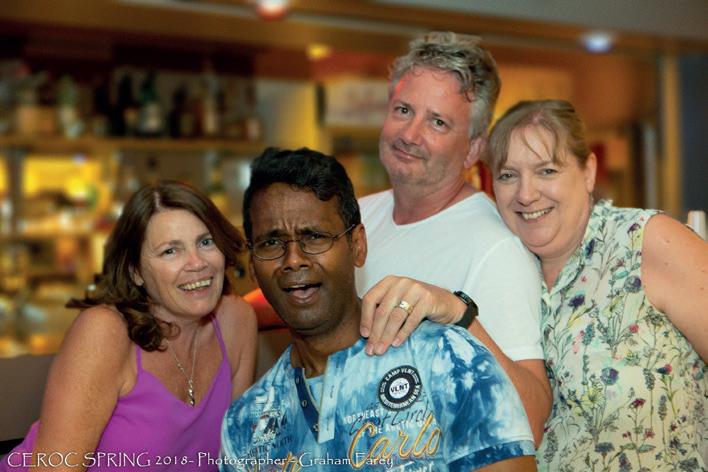



Bowls
Arthur Andrews 261990
Bridge Club
Howard Waller 261693
1st Melbourn Rainbows
Abigail Roberts 261505










Brownies – 1st Melbourn

Stephanie Clifford 220272

Brownies – 2nd Melbourn

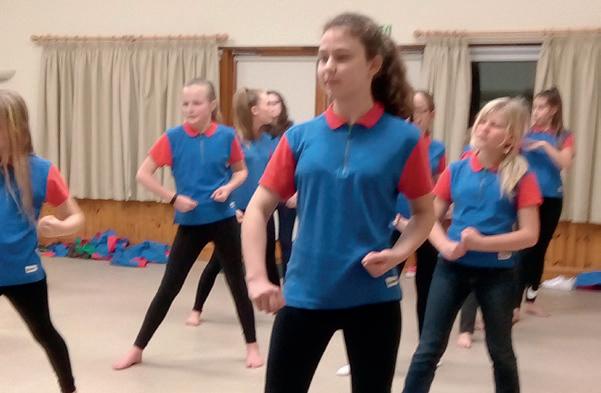
Samantha Pascoe 261400
Croquet
Janet Pope 248342
Football Club
Andrew Edwards 223109
Dynamos Football Club
Les Morley 07739 593771
Gardening Club
Helen Powell 245887
Guides – Ist Melbourn Hilary Marsh 261443



Melbourn Judo Club
Iain Reid 241830
Melbourn Karate Club Peter Khera 07866 374674
Melbourn Sports Centre
Graham Johnson-Mack 263313
Melbourn and Meldreth Women’s Group
Pat Smith 262575
Sue Toule 260955
Anne Harrison 261775
Photographic Club


Bruce Huett 232855

Ramblers
Dave Allard 242677
Royston and District Round Table
Michael Seymour 221398
Swimming Club
Jenny Brackley 244593
Tennis (Melbourn)
Dave Liddiard 07508 995 781
Tennis (Meldreth)
Tracy Aggett 243376

Both of the rainbow units, The Butterflies and The Bees, have had a very busy start to the year.
We had fun with home-made instruments to see what sounds we could come up with. It was a very musical evening.
We started on our skill builder badge with some science experiments which included using magnets, seeing how restricting oxygen affected a candle flame, making vinegar volcanoes and trying to make plasticine float!
We went on our annual pantomime trip to see Royston CADS perform Robinson Crusoe, (Oh no we didn’t!), and even got to meet some of the cast!

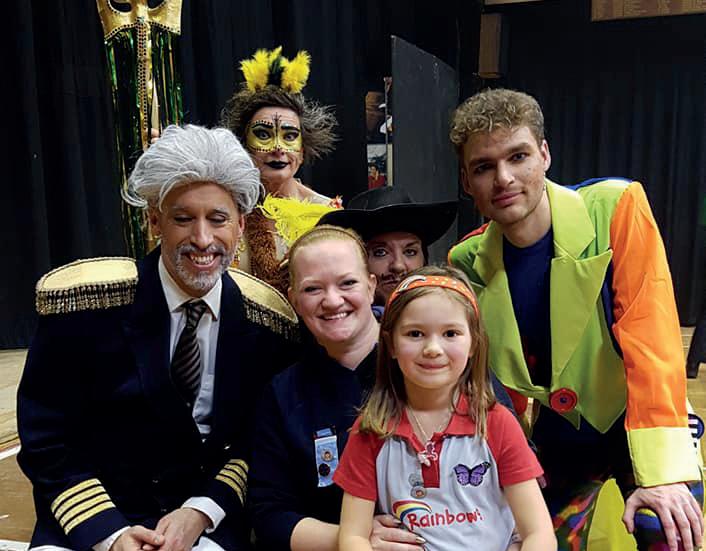
The rainbows had a go at making their own puppets with card, fabric and lots of embellishments. It was interesting to see the different characters they created.
We were grateful to have a visit from our local PCSO unit, who went over some safety tips with the rainbows. The girls were lucky enough to have a sit in the patrol car, try on the uniform and even press the siren!
Carrying on with the crafting, they all decorated some beautiful candles for Mother’s day, which were expertly smuggled out of the meeting to surprise mums on the Sunday.
We were delighted to be provided with a puppet show by our district, to celebrate Thinking Day, (22nd February). It was a wonderful whimsical tale from the Theatre of Widdershins, including Snow White, Little Red and a bear. The rainbows really enjoyed taking part in the performance and we hope they took something away with them from the event.
At the final meeting of the term, both units came together to take part in an Easter egg race. Once they had collected all of their eggs, they then had to find and arrange clues to find their prizes! Easter eggs all round! We presented the rainbows with their badges earned over the term, and sadly said goodbye to four rainbows going on to the next stage in guiding.



How do you get 23 Guides onto a crowded tube train? Go right to the end of the platform, and pile in as soon as the doors open! This year’s big day out for the Guides was a trip to London’s West End to see School of Rock, a musical about a maverick teacher encouraging children to lose their inhibitions and play rock music.
bullying, and for Mothers Day the girls created chocolate sweets packaged in a decorated gift bag which they had learned to make earlier in the term. We finished the Spring term with an Easter challenge hunt where the Guides used grid references to find clues around the churchyard, then completed challenges in the hall to earn mini Easter eggs.
If you would like to know more about joining our waiting list or becoming a leader, or if you have any skills, charities or interests which you would like to share with us, please contact me on: 01763 261443 or email: melbournguides@gmail.com
Hilary Marshwww.roystonlocalhistory.org.uk
Back in our weekly meetings, to complete the new ‘Live Smart’ badge the girls have learnt lots of useful life skills. For ‘Life Hacks’ they learnt to pump a tyre to find a puncture, to hull a strawberry, sew on a button, and to make a gift bag from a sheet of A4 paper. The following week some incredibly creative ideas were used to build a 3-D board game using bottle tops, lego, paper straws and buttons, held together with nails, screws and lots of glue.
We also had a science themed evening when the Guides managed to extract DNA from strawberries, and float a ping pong ball over a hairdryer, and they also had great fun mixing various liquids and household chemicals with red cabbage juice to see what colours would result.
Self-defence is part of the new programme, so we were delighted that Tae-Kwon-Do instructor Jonathan Marshall and his team came to teach us some basic moves. The girls enjoyed trying some simple blocking and kicking moves, as well as how to escape from an attacking hold.
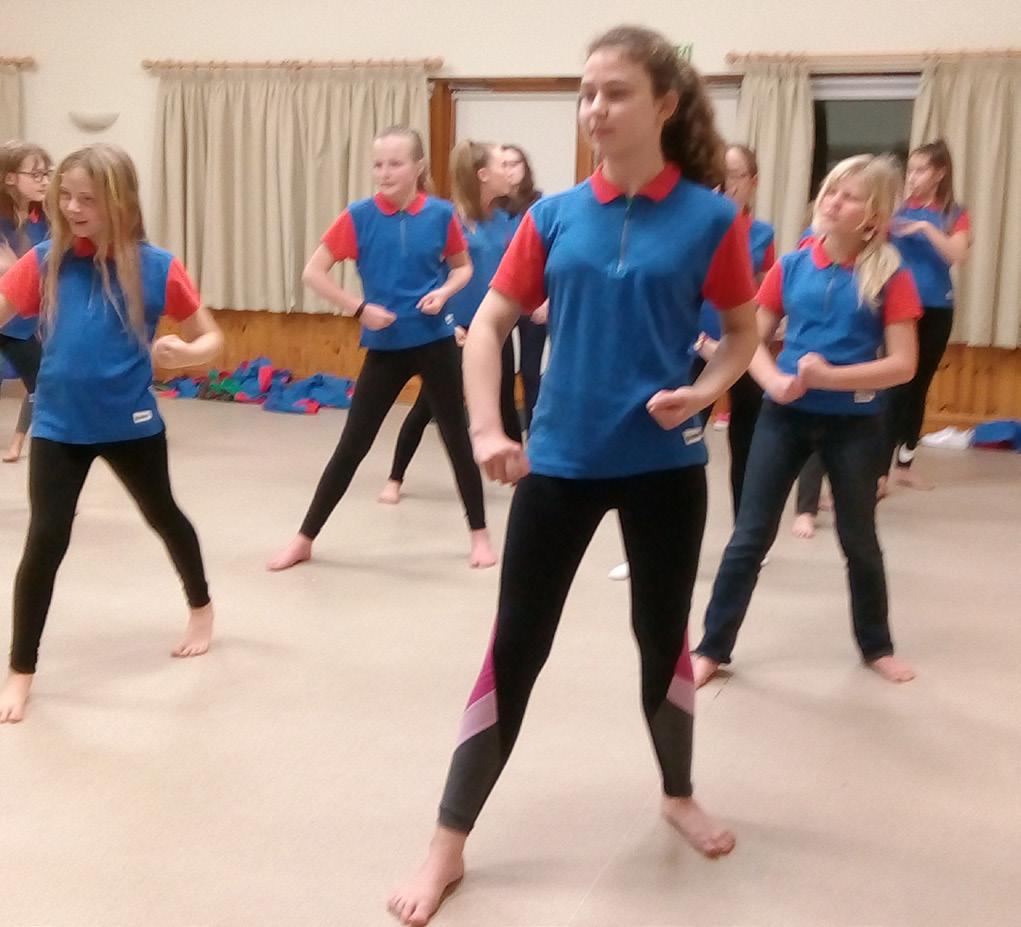
On Valentine’s Day, the girls made a Danish Heart friendship card and devised little plays to show how to cope with text
Our website shows all the books we have for sale. Many of these result from the considerable work undertaken by our Publications sub-committee. The books may be ordered by post from David Allard 01763 242677. They may also be purchased at the Royston Museum & Arts Gallery in Kneesworth Street (open Wednesdays, Thursdays and Saturdays 10 a.m. to 4.45 p.m.) and some are available at the Cave Bookshop in Melbourn Street or at Royston Library.
Our evening meetings are held in the Heritage Hall (the main hall downstairs) Royston Town Hall on the first Thursday of the month starting at 8pm. They will resume on 3rd October 2019 and continue monthly thereafter until May 2020.
Annual membership £5 (Sept-Aug) (Under 18s half price) Visitors £2
Our annual coach outing is on Saturday 1st June to Oliver Cromwell’s House and Ely, Group Tours. If interested, please contact David Allard for availability of places. Email: david.allard@ntlworld.com
Thinking of starting your family history? Been searching for an ancestor for a while and hit a brick wall? Come and say hello to our friendly society.
With drop in surgeries throughout Cambridgeshire and great talks and events throughout the year there is something for everyone.
For all the latest events and details as to our drop in surgeries please take a look at our website www.cfhs.org. uk or our fantastic Facebook page www.facebook.com/ cambridgeshirefhs
Coming up Next: » Saturday 8th June – Central Library Cambridge, Lion Yard 10:30 – 3:30pm – Drop in help surgery
2:00pm – Talk - The David Parr House – Tamsin Wimhurst. An ordinary Cambridge terraced house containing an extraordinary secret world.






It has been a relatively quiet time at the Bridge Club. Player numbers are still generally above 10 tables (40 people) on both Monday evenings and Tuesday afternoons. The standard of play, in particular on Tuesdays, is improving with the kind support and help from Philip Vince in particular, as well as from more competent players, who are assisting the less confident members.
There is a general feeling of excitement and anticipation as a large percentage of players from both days are looking forward to a Bridge Holiday in Lincoln next month, which is being organised by Chris Norris. Tuition will be given as well as playing sessions.
In September Melbourn Bridge Club will be celebrating its first 10 years. From the early days spent at Vicarage Close Community Centre, when a handful of enthusiastic players turned up to enjoy this fascinating game, to 2019 when a great many people have either learnt to play, or have improved their game. The Bridge Club is now run in Orchard Road, Melbourn at the United Reform Church Hall.
For more details, please call Howard Waller on 01763 261693
Our walks programme continues right through the year. For details visit our website: www.ramblers.org.uk or contact David Allard (01763 242677) email: david.slade.allard@gmail.com or Lesley Abbiss (01763 273463).
There is also a poster displaying walks for the current month in Royston library, Royston Museum & Art Gallery and Melbourn Hub.
We have walks on Sundays, which are normally 5–7 miles in the morning and a similar or shorter walk in the afternoon. Occasionally Sunday walks are Figures of Eight making it possible to do only the morning or only the afternoon. Halfday walks (5-7 miles) are held on Tuesday and Thursday mornings. Our evening walks (3–5 miles) will be on a different day each week until the end of August 2019. Prospective new members may come on three walks before deciding whether to join.
www.ramblers.org.uk to join.
Meldreth Croquet Club has for the second-year running entered the East Anglian Croquet Federation (EACF) Golf Croquet Handicap League. We play in the Central division which consists of 6 other teams. We have had a great deal of success, winning 4 games, drawing one and losing one. When we finished all our games we were leading the League, but there were still a few matches for other teams to play, so it was fingers crossed that we would still be on top at the end
of the season. We did win the league which was a great result for a small club, we have about 20 members some of the larger clubs have 70–80 members. As area winners, we took part in the EACF league semi-finals on September 15th at Wrest Park against Northampton, it was a close fought match but we lost 10–8.
Meldreth has a small number of members who play Association Croquet, this is a more complex and very tactical form of the game. We play in the East Anglian Croquet Federation Beds and Herts league. Being a small club with few association players we are at a disadvantage against the larger clubs but we hold our own.
We have two internal club competitions; the golf croquet competition was won by Lin Wallbridge. The association croquet competition for the Nickisson Cup was won by Keith Harker.
As many people know, the lawn is situated behind the British Queen so players and visiting teams can enjoy playing croquet in a scenic location and also enjoy a drink and/ or a meal in the excellent village pub. Regular Club sessions are held every Sunday morning and alternate Tuesday and Thursday afternoons throughout the year, weather and lawn condition permitting.
We also host croquet session for the Melbourn, Royston and Cambridge U3A groups with both beginners and improvers courses. All equipment, including mallets is provided.
The Club contacts are Roger Wallbridge (for Golf Croquet) on 01763 261405 email rl38@myphone.coop.
For everything else Janet Pope 01763 248239 email jacksonpope@john-lewis.com.
https://melbourndynamosfc.wordpress.com
Founded in 2003, Melbourn Dynamos FC is a thriving and friendly community youth football club that gives boys and girls the opportunity to play regular football regardless of their experience or ability at all ages from 3 through to 18.
We are a successful club defined by the strength of support from members and families, the praise and recognition of fellow clubs and FA Leagues, the work with our Community partners including Melbourn Village College and Melbourn Parish Council, and of course our players’ achievements on the pitch and their support for the community. With the support of our fundraising and community partners, we are making the club more inclusive by assisting players whose families are unable to afford the necessary fees.
We regularly host tournaments on behalf of the Royston Crow Youth Football League and these raise funds for our Club and our nominated charity, Tom’s Trust www.tomstrust. org.uk MDFC was awarded Charter Standard status in 2009 and all of our coaches are DBS checked and are FA qualified to at least Level 1.
This season we currently have more than 200 players in 16
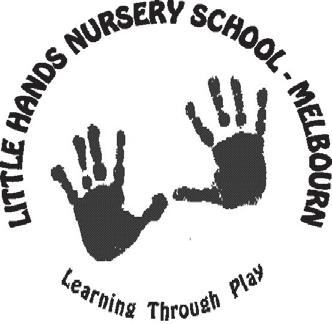



teams at the Club and this includes our youngest players – the Dynamites. There are both mixed and girls-only sessions for players between 3 – 6 years each Saturday morning. Our club is committed to developing our players through respect of fair play and a love of the game. This approach wins the respect of other clubs as well as providing the skills and commitment to reach cup finals.
MDFC is committed to supporting the health and wellbeing of the whole community. Many of you will have seen the great news announced on our Community facebook page about the full size all weather sports court for Melbourn https://www.facebook.com/melbourndynamoscommunity/ .
Discussions with the Football Foundation are going well and we hope that with the support of our community partners we will soon have this fantastic new facility for the village. We have every confidence that with our fundraising and contributions from our community partners, substantial funding from the Football Foundation will be granted. This project is central to the continuing success and development of the club as well providing a much needed facility for the village. Our first fundraising event of the year was a 5k Fun Run on Sunday 7th April (photo below) that started and finished at the Melbourn Sports Pavilion. In May, this was followed up by under 7s and U9s football tournaments hosted for the Royston Crow Youth Football League. All of these events were great successes thanks to the brilliant volunteers who support the club’s community work. For more information about the progress of this community project then please follow us on our Community facebook page.
Our youngest players – the Dynamites, increasingly provide the core of our league teams from under 7 upwards. The Dynamites’ coaching team is led by Dipak Patel. Dee was Cambridge FA’s Community Coach of the year for 2013, gained his Level 2 coaching qualification in June 2015 and is

our Football Development Officer. These players, aged 3–6, have fun and develop their skills before deciding whether to play league football as the club’s under 7s team. This fun, preparation and skill development through the Dynamites has undoubtedly brought more success to our current League Teams. These girls and boys train with level 2 and level 1 FA qualified coaches in a Saturday morning fun between 09.15–10.15 a.m. at Melbourn Sports Centre. Sessions feature lots of short activities aimed at improving individual skills, concentration and the ability to be part of a team. The first one hour session is free thereafter we charge £2. All are welcome to the Melbourn Dynamites so why not bring your kids along so they can check it out. This season we are pleased to announce that we have a separate session for Dynamites Girls to help them enjoy football and form the basis of our future girls’ league teams. Dynamites Girls runs from 10.15–11.30am on Saturday mornings for ages from 4-7.
The club’s success depends entirely on enthusiastic members and volunteers. Our continuing success and growth means that we need even more volunteers. If you feel that you would like to contribute to the club as an administrator, communications leader, fund-raiser, fixtures secretary, coach, match day official or in some other volunteer capacity then we would be pleased to hear from you through secretary.mdfc@gmail.com or chairman. mdfc@gmail.com. More information about the club and individual teams is available from the club’s Website: https:// melbourndynamosfc.wordpress.com .
The Club are always keen to hear from new players, and new volunteers so please contact us via our Secretary, David Atkins on 01763 263462 or secretary.mdfc@gmail.com, https://melbourndynamosfc.wordpress.com or find us on facebook, ‘Melbourn Dynamos Community’ https://www. facebook.com/melbourndynamoscommunity/
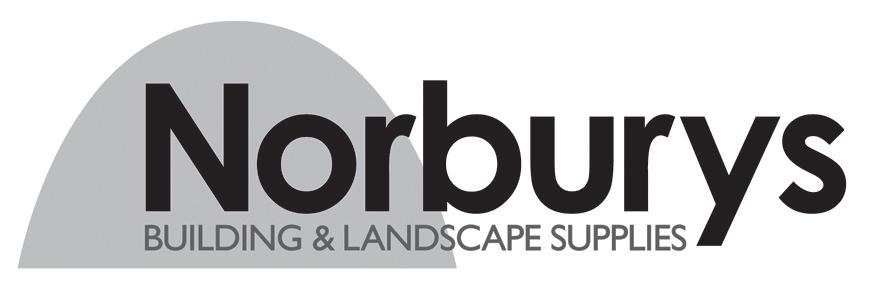








have

We have plenty of activities on offer this summer, with something for the whole community to get involved with….


Local lake stocked with Roach, Bream, Perch, Rudd, Chub, Barbel, Ide, Carp and Crucian Carp DayticketsavailableatJKLTackle
Find us on Facebook @Eternit AC Fishing
Juniors Roach, Barbel, Carp Tackle Fishing
Fishing tackle for all types of fishing
Wide variety of baits from maggots to boilies and pike bait
Agents for Eternit AC Season and Day tickets
Unit 7, Whitecroft Road, Meldreth, SG8 6ND 07966 268486 / 07773488585 Find us on Facebook @JKLTackle
JJG Angling Angling Tution
Please call James for a quote on 07773488585
For something a bit different this Father’s Day, how about treating your Dad to his own gym membership or purchasing a Gift Discount Card for our other activities here at Melbourn Sports? It’s a great way to help a loved one get fit!
Fishing tackle for all types of fishing
Wide variety of baits from maggots to boilies and pike bait
We welcome our new instructor Sarah-Jane to our Pilates programme this summer. She will be running hourly sessions for all abilities on Monday nights (1800–2100). There’s also a Thursday morning session with Emily (0945–1245). If you’d like to give this popular activity a try, or you are already a devotee, please get in touch to join in with our sessions.
Unit 7, Whitecroft Road, Meldreth, SG8 6ND 07966 268486 / 07773488585 Find us on Facebook @JKLTackle
JJG Angling Angling Tution
Please call James for a quote on 07773488585
This fun-filled indoor activity is becoming more popular with children aged five and upwards, so why not give it a go? We run classes on Monday evenings from 1600 – 1900 and currently have spaces available to book on sessions for older children and teens. Plus, for all those budding gymnastics stars, we’re working very closely with Comberton Gymnastics Club to offer sessions on a Wednesday evening from 1600 – 1900. For trampolining, you can get involved directly through Melbourn. If you are interested in joining, please contact Sam Bryant at Comberton Gymnastic Club on comberton.gc@btinternet.com
With summer holidays fast approaching, it’s never too early to start planning your summer sports. We have a variety of activities to choose from, including our Ofsted Registered Playscheme (The Kidz Factor), Trampoline Crash Course, Sport Taster Sessions and Swimming Crash Course. Also available are our very popular Children’s Sports Camps, always a fun way to try out both mainstream and specialist activities.
For those who want to take their swimming to the next level, why not consider joining our Swim Club on a Friday evening? Swim Club is a friendly, non-competitive club run by a professional swim coach. Members will develop their technique as well as stamina and strength. For more information, contact Jenny Brackley on 01763 244593 or email info@mc-sport.co.uk.
Specifically, for those aged 14 or over, we have teen training sessions on our Fitness Suite machines as well as swimming lessons, lifeguard courses, tennis coaching, triathlon sessions, tennis coaching, squash and much more. Priced at £2.50 per session.
Why not let us help you shape up before the summer? We have loads of classes to keep you fit and healthy, including Boot Camp, Body Workout and Aquafit. Or why not take advantage of one of our great membership schemes to our fitness suite, which houses the latest in gymnasium equipment, including C.V machines fitted with audio visual technology (for those rainy days throughout the year).
melbournmagazine@gmail.com




We also welcome back outdoor sports and tennis season. For all budding Wimbledon stars, courts can be hired midweek and at weekends. For those wanting to take their tennis to the next level, then why not have some lessons? We’ve teamed up with MF Tennis to offer coaching sessions on a Saturday afternoon. For further information on lessons, please contact Matt Fellingham 07779 273655 or e-mail: matt@ mftennis.com
Looking for the perfect venue to hold your children’s birthday party? Then your search is over! We have all the facilities here for a fun-packed event with a variety of activities for your guests to enjoy, including trampolining (always a popular choice), football and traditional pool parties.
We will also be holding a Mini Tri-Event on Saturday 16th September 2019 (full details TBC). So why not come along and try out this energetic activity, growing more popular all the time.
For those of you who don’t already know, we have:
• A state of the art fitness suite offering a variety of membership schemes
• A 20 metre swimming pool (kept ever so slightly warmer than most!)
• A comprehensive swimming lesson programme, catering for all ages and abilities
• Upgraded multisports courts for hire including tennis, football and squash courts
• Water sports courses and activities
• Traditional and modern exercise classes
• Access to Melbourn Village College sports hall and gymnasium for activities such as trampolining, badminton and basketball
• Supervised sports and pool parties
For further details on these or any other activities, please drop in, call 01763 263313 or go online at www.mc-sport.co.uk
We look forward to seeing you this season!
Melbourn Sports Centre, The Village College, The Moor, Melbourn, Royston, Hertfordshire, SG8 6EF 01763 263313 / www.mc-sport.co.uk / info@mc-sport.co.uk


Writing this in April, work is now complete on the new Beginner Line whilst ongoing works continue to improve the Advance Lines.
As part of the conservation of the site the planting of a variety of new trees to further enhance the environment has also taken place.
As previous years’ plans are also underway for our End of Season Jam over the August Bank Holiday which will celebrate the 10th Anniversary of the club!
The club is open annually April to September. Strictly for BMX use only, for ages 12 and older, members have the option of either becoming a seasonal member for £50 (April to September), or a day member (per session) for £10.
Our aim for the club is to promote an activity for the young community of Melbourn and surrounding areas to participate in, with the guidance of our committee and experts, in a safe and friendly environment. Members will have access to BMX coaching and expertise on site during club open days.
For more details and to download your membership form today please visit; www.grinnelhillbmx.co.uk
Acknowledgements: Melbourn Parish Council for their ongoing support at all levels to keep the club sustainable and open. Frog End Pet Supplies, Melbourn for their supply of grass seed and bird food. Wrights Mower Centre, Melbourn for their help and generosity in supporting us to keep the site to a well maintained and safe standard for the foreseeable future. Norburys Builders Merchants, Melbourn for their ongoing support of chalk aggregates for us to build with.


Please come and join us for our next literary lunch to be held on Tuesday 11th June at 12.15pm at The Old Bull Inn, Royston. We welcome Philip Birtles who penned ‘The Past, Present and Future’ in memory of his late wife Martha, who spent time at the Garden House Hospice in Letchworth. Tickets are £15 and include a buffet lunch. To book a ticket please call our office on 01763 262262, email admin@hsrsc.org.uk or book online through www.ticketsource.co.uk/hsrsc
Coffee Morning in aid of Home-Start, to be held on Saturday 20th July from 10am – 12 noon at 52 Sun Hill, Royston, SG8 9AX. Tea/coffee and home-made cakes - everyone welcome.

This competition is open to children up to the age of 11 and will be judged in the following age categories – under 3, 3–5 year olds, 6–8 year olds and 9-11 year olds
The Theme of the competition is to Design A Kite Picture
Please design your picture on a piece of A4 paper or card, then add your name, age and telephone number on the back of your picture
Please post your entry to us by Friday 2nd August, 2019 at:- Home Start Royston & South Cambridgeshire Unit 6, Valley Farm, Station Road, Meldreth, Royston, Herts. SG8 6JP or come along and see us on the Home-Start stall at the Kite Festival on 4th August and do your picture then. Prizes will be awarded for each age category and winners will be notified
If you have any queries or require further information, please call the Home-Start office on 01763 262262

Musical Director – Andrew O’Brien
Songs of Love Brahms – Liebeslieder Walzer Schubert – Fantasia in F Minor for Four Hands Morten Lauridsen – Nocturnes
Alexander L’Estrange – Love’s Philosophy
Saturday 29th June – 7.30pm Barkway Parish Church
Tickets £12 (concessions £9, school students £1) For tickets see website www.roystonchoralsoc.org.uk Caroline Franks Tel 01920 822723 or ask a choir member
June 23rd 2019
Summer gardens and afternoon teas with homemade cake; quintessentially British. Each Open Gardens event supports a different charity and this year we have selected the Cambridge branch of Parkinson’s UK.
Maps at £3 (under 13’s free) are available from the shop, St Lawrence’s Church and in the featured gardens. Teas, produce stall and a loo can be found at the church from 1:30pm–5pm.
Homecare : our fully trained carers visit you in your home.
Sitting service : a visit from our experienced sta gives family carers time for themselves
Centre : based at Moorlands Court with a friendly and sociable atmosphere and includes a tasty 2 course lunch.
service : nutritious, hot lunchtime meal delivered to you.
Housekeeping : we do those jobs which you can no longer manage, from cleaning and ironing, to bed changing and shopping.



To nd out more, just call us at Moorlands Court on 01763 260564, or email : denise.taylor@chsgroup.org.uk


Saturday 24th to Monday 26th August 2019,
holiday weekend) 10.00am – 5.30pm
The Exhibition will have both framed and unframed work, as well as cards.
Visitors can purchase refreshments and delicious home-made cakes (including gluten-free).
Grantchester Village Hall, High Street, Grantchester, Cambridge, CB3 9NF.
This years summer art event, will feature an exciting
of exhibitions by over 350 artists at 222 locations in the city and surrounding areas.
Among the huge range of specialisms will be: fine art, photography, pottery, glass making, sculpture, illustration, textiles, jewellery and furniture making, and more besides. The studios are spread throughout the whole region including many villages around Royston, Saffron Walden, St Ives and Chatteris as well as Ely and central Cambridge.
As usual, the distinctive yellow COS flags will be out to identify participating studios.
Studios are open to visit between 11am and 6pm However, as not all artists will exhibit every weekend it is important to check the website, or refer to the famous yellow guide. Check out the app!
Cambridge Open Studios has an app to help visitors find exactly what they are looking for and plan their days out. You can search by the artist’s name, medium (painting, pottery, glass etc.), and location.
In the months leading up to the open studio event, many artists will be running workshops, courses and exhibitions. Members of the public can keep up to date on their activities via the COS website (www.camopenstudios.co.uk) or by following them on Facebook, Twitter and Instagram using @CamOpenStudios.
Cambridge Open Studios is one of the oldest open studio events in the country. It has its roots in the 1960s when a small group of artists invited local people to visit their studios and see how their art was produced, as part of a movement to demystify arts and make them available to all. COS currently has around 493 active members throughout Cambridgeshire, and is steadily increasing its membership figures year on year.

Melbourn magazine is non-profit and all work on the magazine including design and layout are produced by volunteers. The Magazine is published four times a year in the first week of March, June, September and December. We print 2250 copies which are delivered free to every house and business in the village. Advertising revenue is used for printing costs only.
Adverts should be supplied as finished artwork and must be at the sizes shown below. Please send artwork to melbournmagazine@gmail.com.
The current rates for advertising in the Magazine are as follows:
Size per… Width x Height B/W Colour
1/4 inside page (79 × 128 mm) £115 £170
1/2 inside page (163 × 128 mm) £195 £270
For further information on advertising please telephone 221965. Remittance or cheques should be made to Melbourn Magazine.
Editorial Ann Dekkers 261144
Editorial\Production Peter Simmonett 220363
Advertising Vernon Gamon 221965
Distribution Eric Johnston 220197
Parish Profile Mavis Howard 260686
Proof reading
Village Diary
Brenda Meliniotis 261154
Ann Dekkers 261144
Jane Stephens
Brenda Meliniotis 261154
The Melbourn magazine team would like to thank all our advertisers for their support and sponsorship
Abode Town & Country / Estate Agent - 01763 259888 54
All Eyes / Spectacle Makers - 01954 231545 58
Amber Health - 01462 490141 64
angliEAR / Hearing services - 01223 661399 44
Ashton Renovations - 01763 290335 4
Assist Law - Estate Planning - 07786 061457 67
Bannold landscaping materials - 01954 231666 44
B.C.R / Plumbing & Heating - 01763 260007 62
Bumpkins Day Nursery - 01223 208777 28
Bury Lane Farm Shop - 01763 260418 60
Bury Lane Fun Barn - 01763 260418 14
CEROC Dance 07710 409167 54
Chris Thomas / Carpet & Upholstery Cleaning - 01223 836002 21
CHS / Local Community Services - 01763 260564 68
CP Podiatry / Podiatrist - 01763 661841 69
CSL Cheap Storage Ltd - 01763 262344 60
Drivers of Yesteryear/ Wedding Car hire - 01223 261250 30
ESSE - 01763 261000 66
Eternit Angling Club / 365 Days Fishing - 07966 268486 63
Frog End pet Supplies - 01763 263342 64
Garden Design Solutions - 01763 263231 34
Greenlow Kennels - 01763 260624 2
GYC Photography family photographer - 07786 707869 56
Hopkins Homes / Care Home - 01763
16
Jazzercise / Body Workout - 07963 161246 14
Jeremy Ashworth / Property Maintenance - 07815 093166 68
Jeremy Rule / Funeral Service - 01763 242560
JKL Tackle / Fishing tackle shop - 07966 268486
J Oliver Radley / Opticians - 01763 273300
Langham Press - 01223 870266
Lawn Partners / Bespoke lawncare - 01763 244955
Law Storage Ltd - 01223 874629
Leech & Sons / Master Butchers - 01763 260255
Little Hands Nursery School - 01763 260964
Melbourn Dental Practice - 01763 262034 58
Melbourn Flooring & Interiors - 01763 262413 50
Melbourn Garage - 01763 263344 70
Melbourn Ironing Service - 01763 220996 2
Melbourn Springs - Care Home 01763 722734 20
Moncraft / PC Repairs & Installation - 01223 208529 32
Nancy Foster Footcare - 01763 261250 32
Newlings of Royston / Funeral Services - 01763 242375 50
Norburys / Building & Landscape Supplies - 01763 261740 62
Paul Hutley / Carpenter - 07702905915 16
Phillimore Garden Centre - 01763 260537 2
PL Cooper / Flooring Specialists - 01763 260918 26
Prince Property / Property Improvements - 01763 269565 26
Redmayne Arnold & Harris Property Experts - 01223 247440 52
Rothwell’s Carpet Cleaning - 01223 832928 18
Royston Complementry Health - 01763 247440 52 Royston Kitchen & Bathrooms - 01763 245888 72
Sage / Blinds & Interiors - 01763 263399 22
Simon Robinson / Bespoke Picture Framers - 01223 873123 70
Slimming World - 07798 767976 20
South Cambs Motors / Servicing & Repairs - 01763 260246 18
Southwell Court Residential Home - 01763 750006 8
St Georges Nursing Home - 01763 242243 21
Summit / Landscape Gardeners - 01223 929394 22
Taylor & Co /Chartered Accountants - 01763 248545 62
The Letting Centre / Property Management - 01763 263039 30
The Sheene Mill - 01763 261393 66
The Spice Hut / Indian Takeaway - 01763 262425 69
Three Counties K9 Hydrotherapy - 01763 838536 47
TTP - 01763 262626 56
Unlimited Logos - 01763 262081 32
Urban Plastics / Plumbing Suppliers - 01763 262337 68
Wheeler Antiques - Fine Art and furniture 01763 256722 47
Wrights Mower Centre / Garden Machinery - 01763 263393 68
An outstanding product and service from start to nish. We ha v e one aim , to provide a stress free personal servi c e t o o u r local retail and trade customer s, offering an out s tandin g product and s e rvi c e from start to nish. So why not c om e alo n g and visit u s, we are here to help in anyway we c an
















